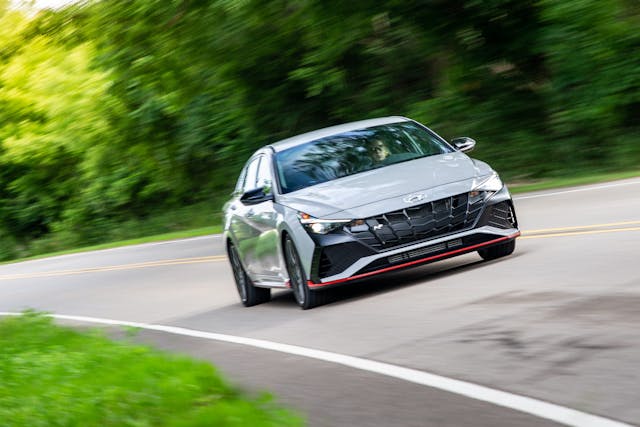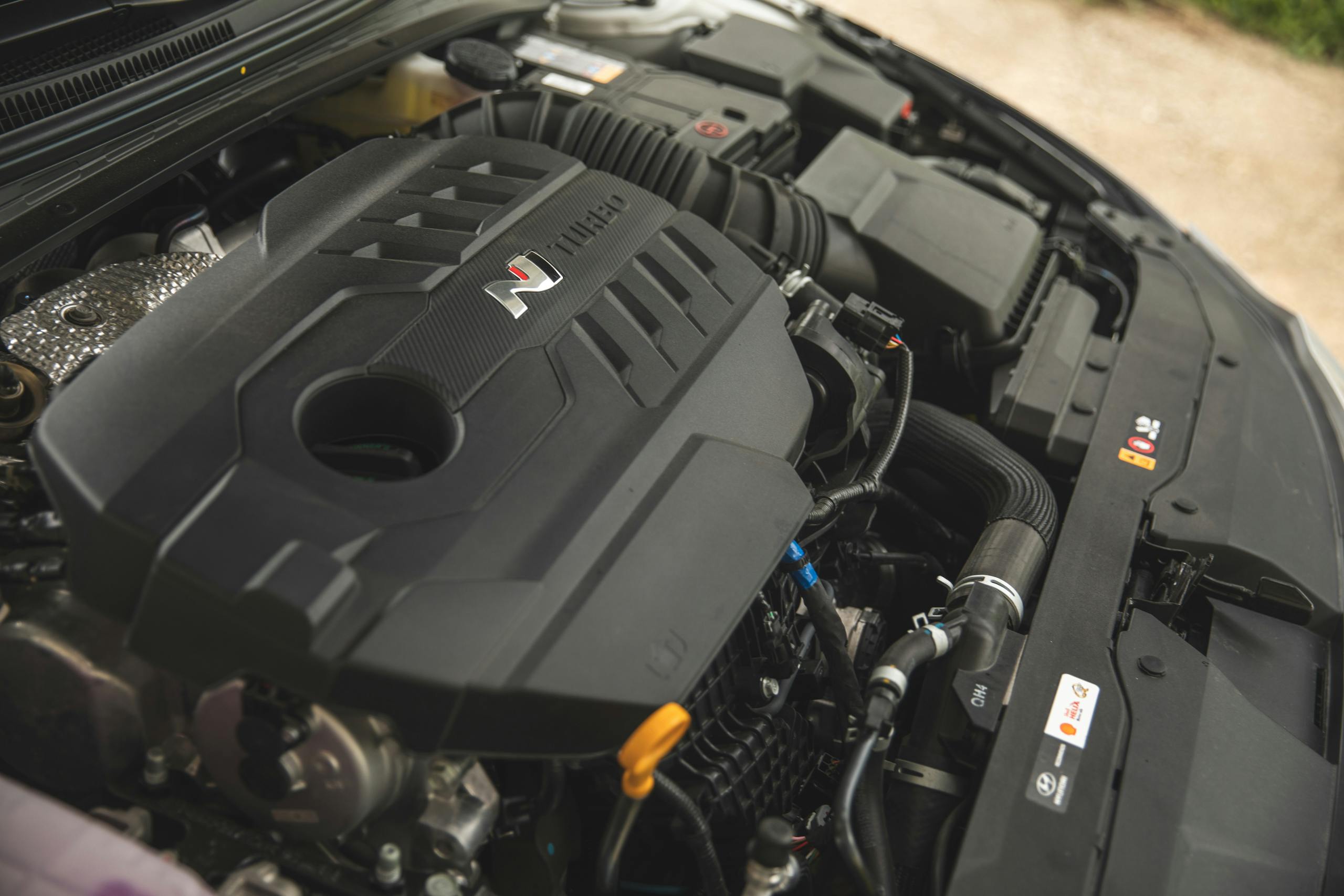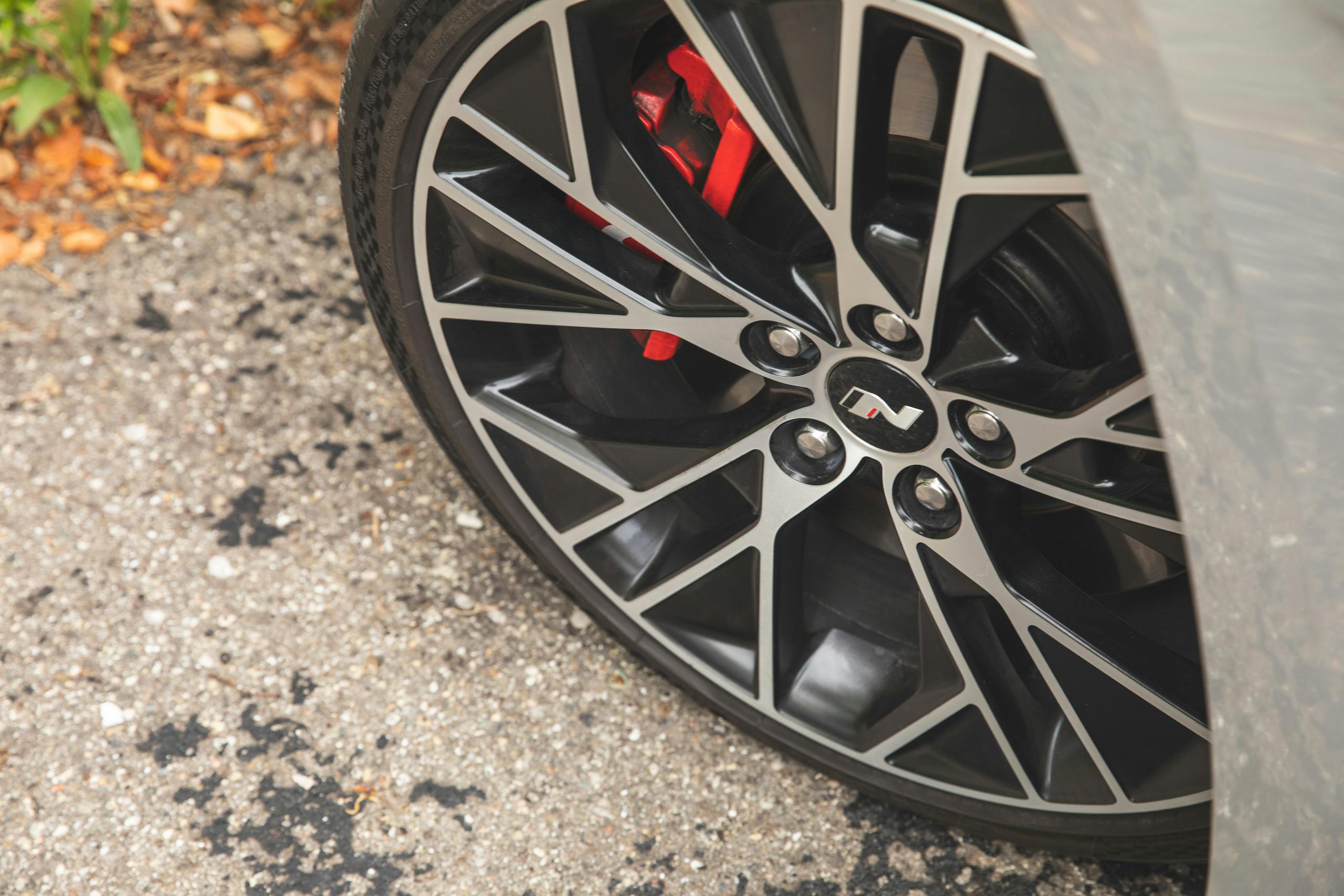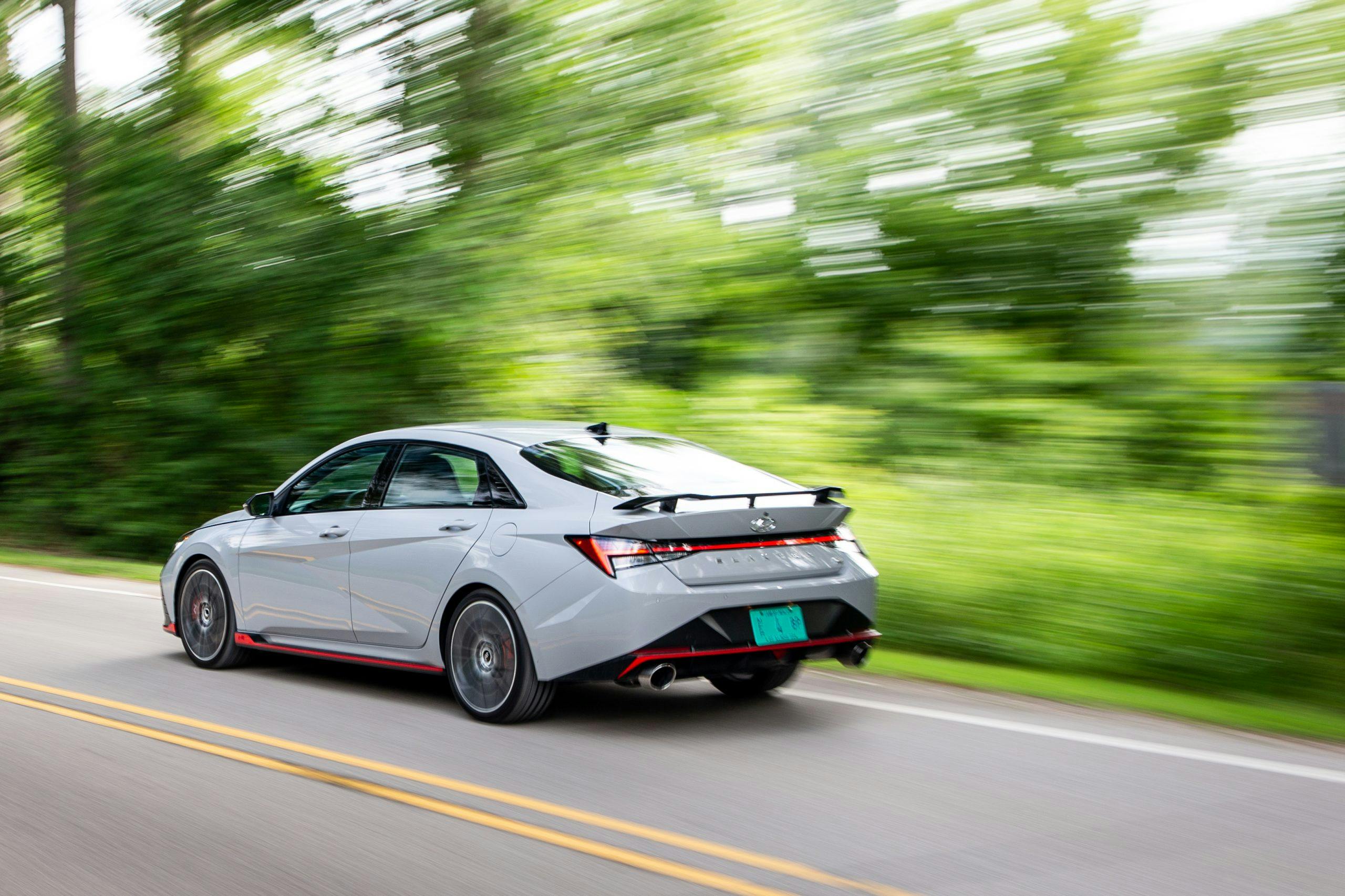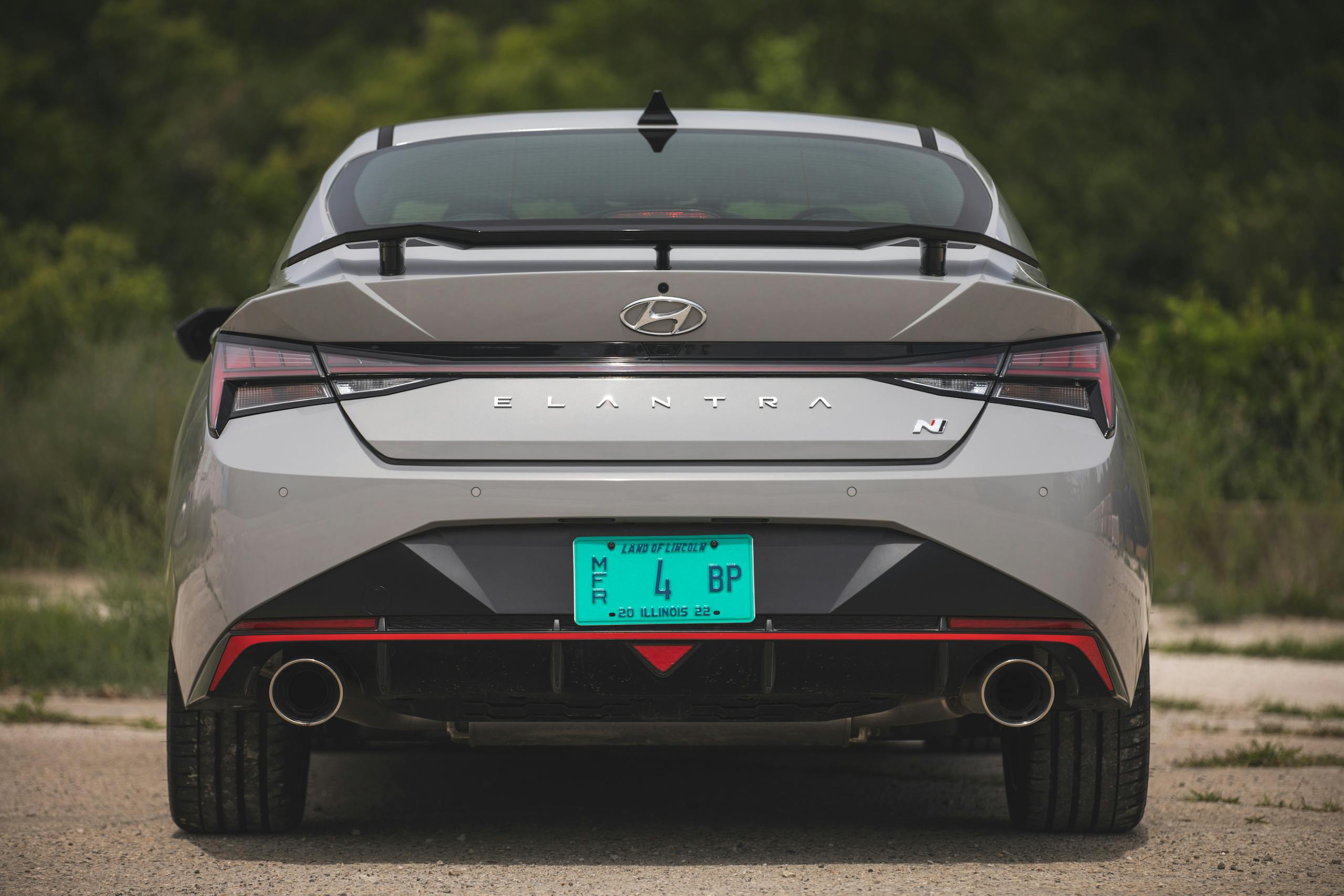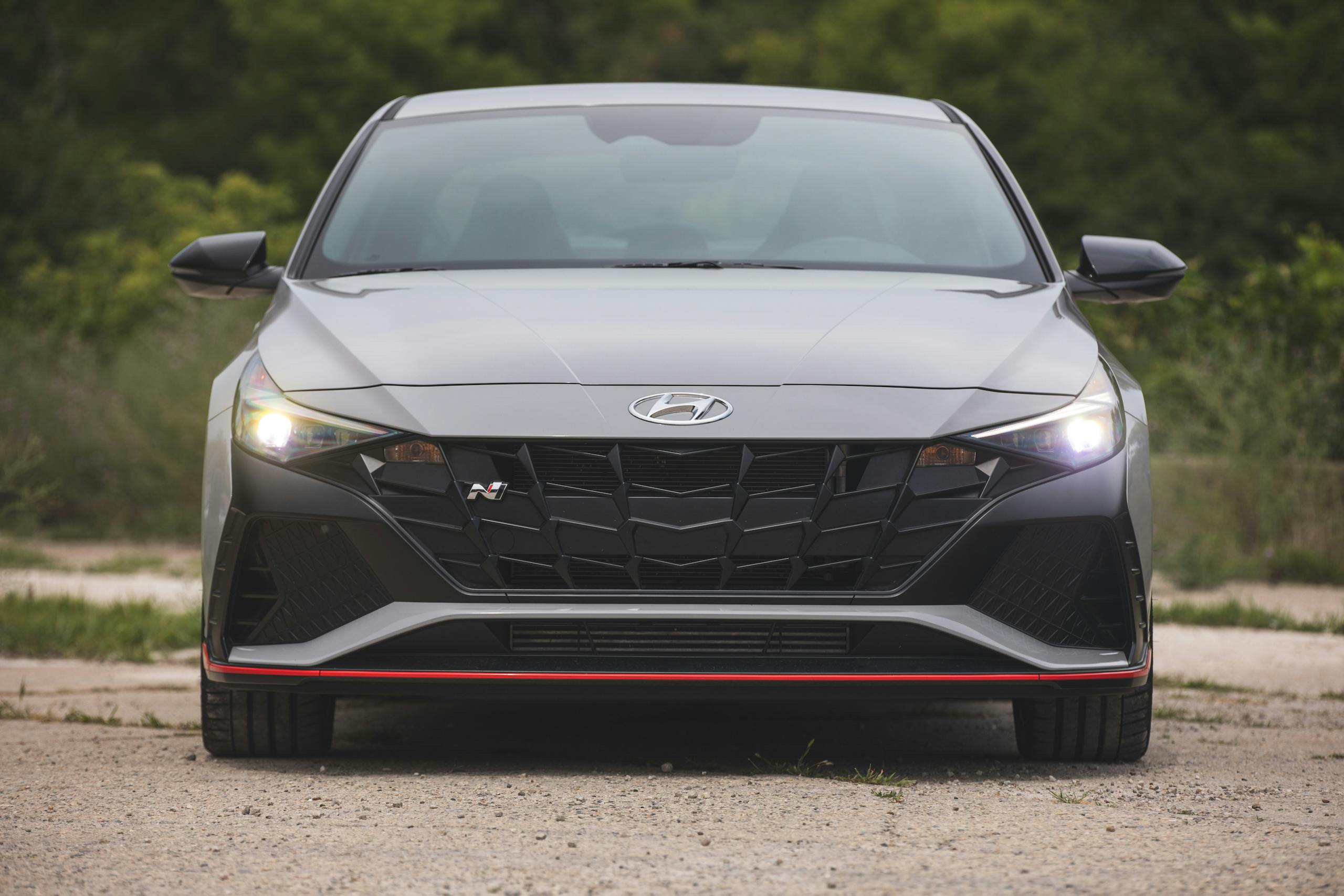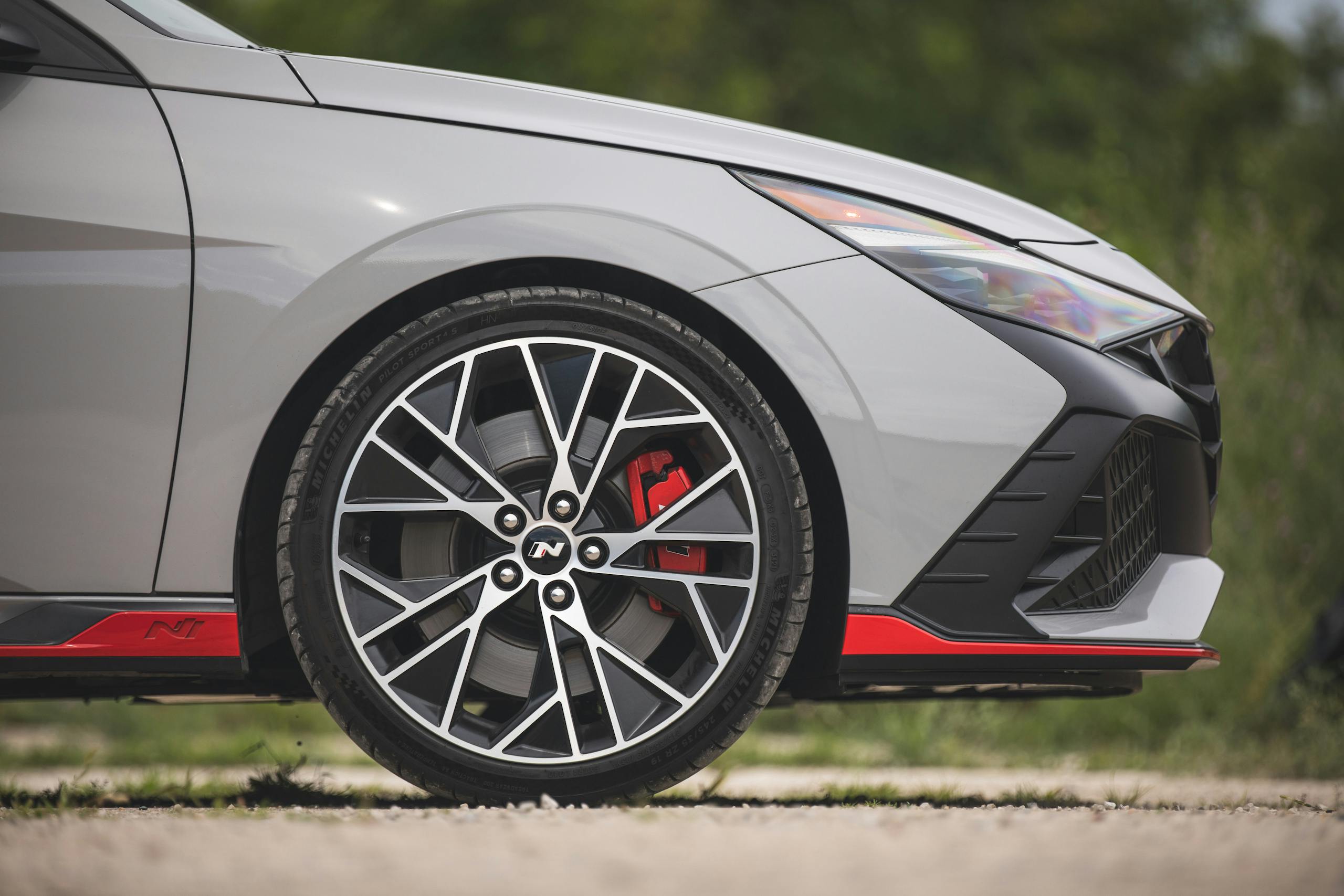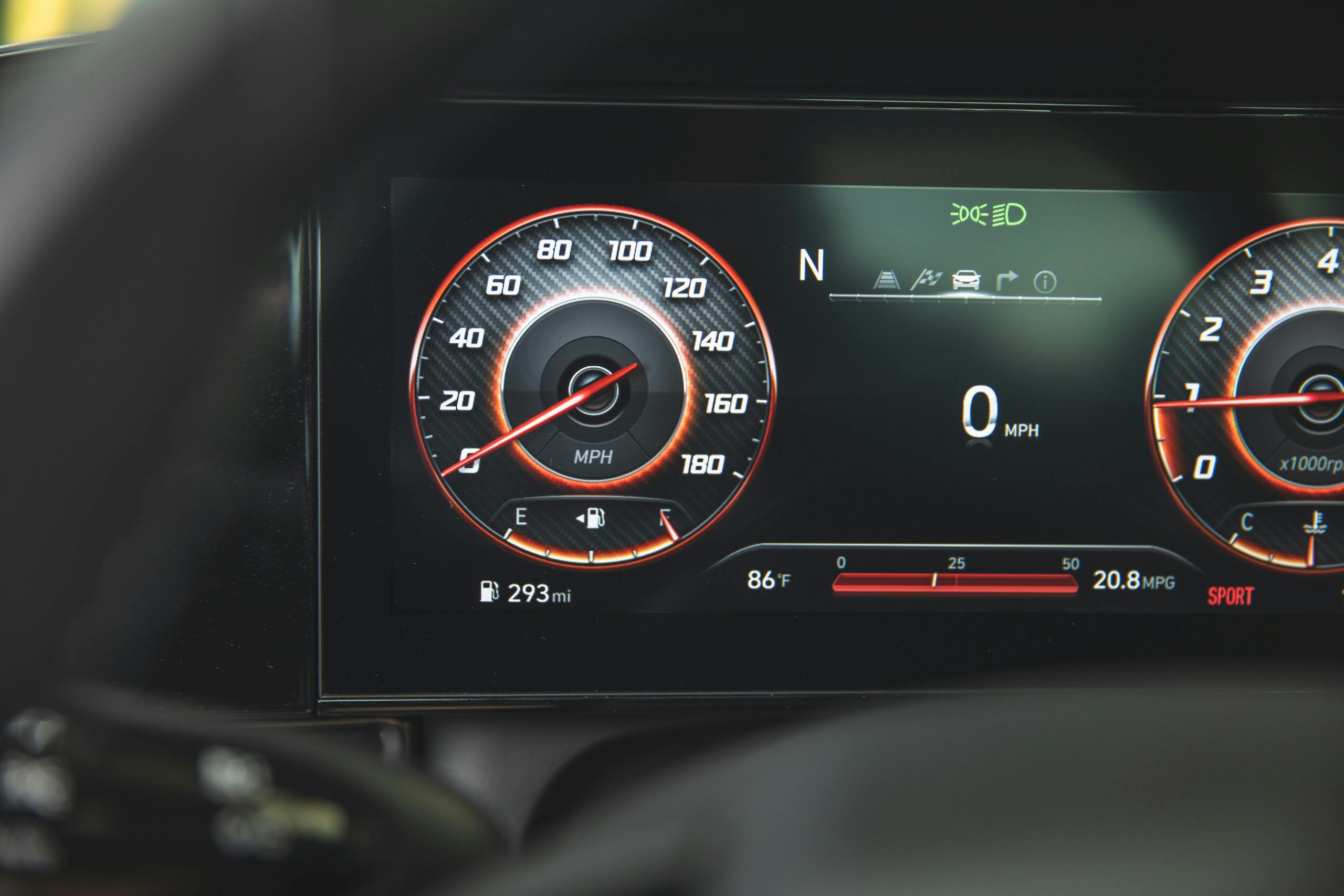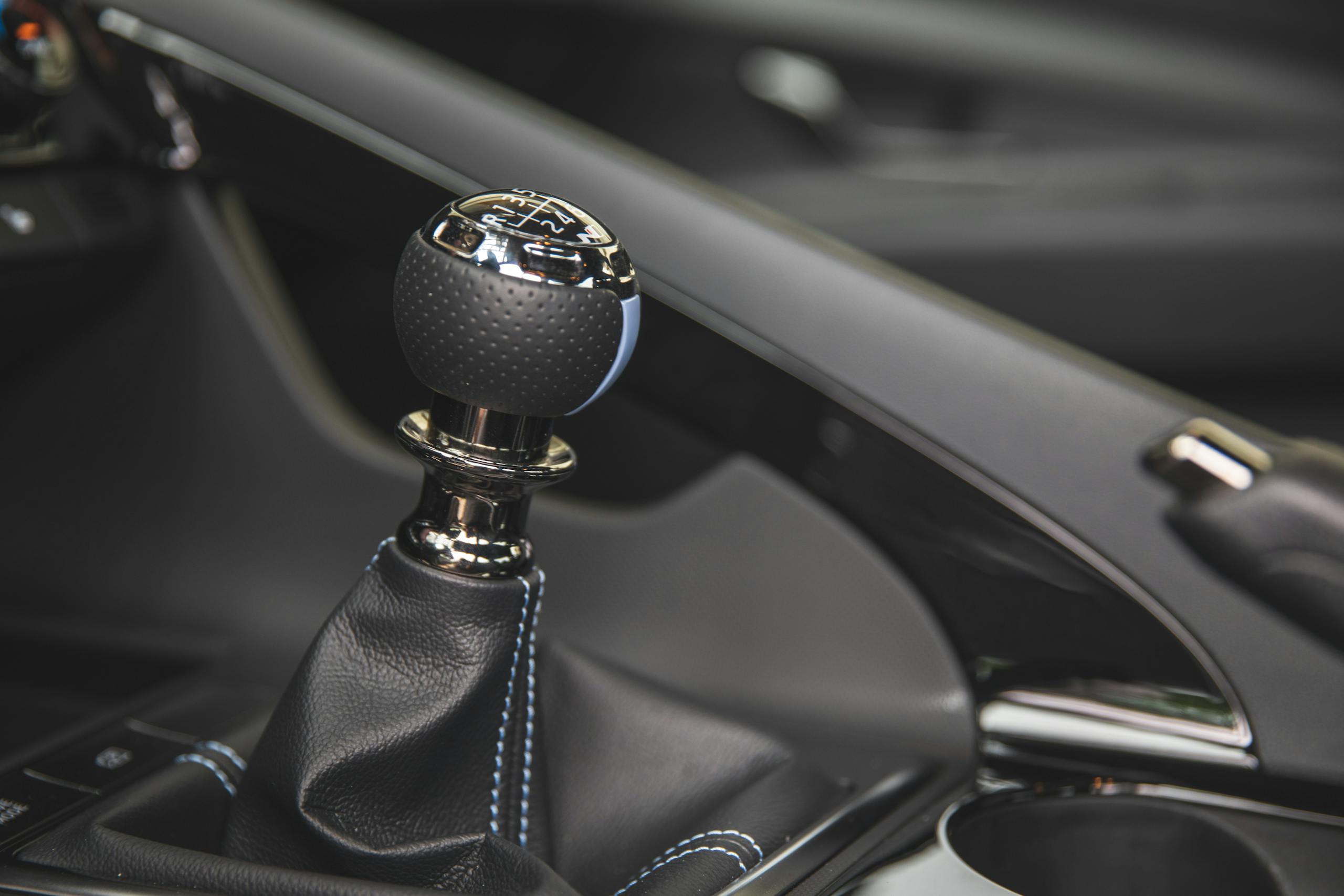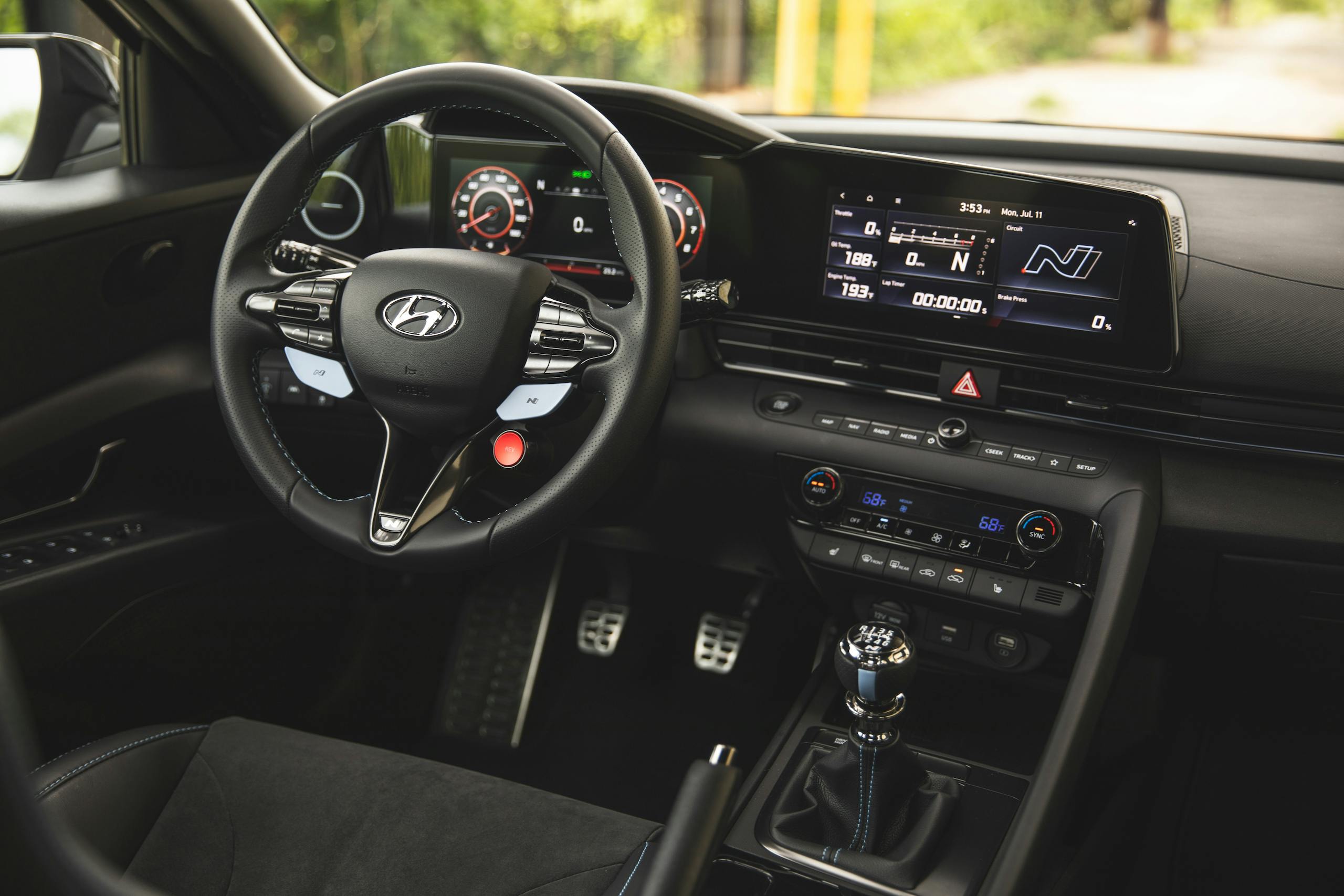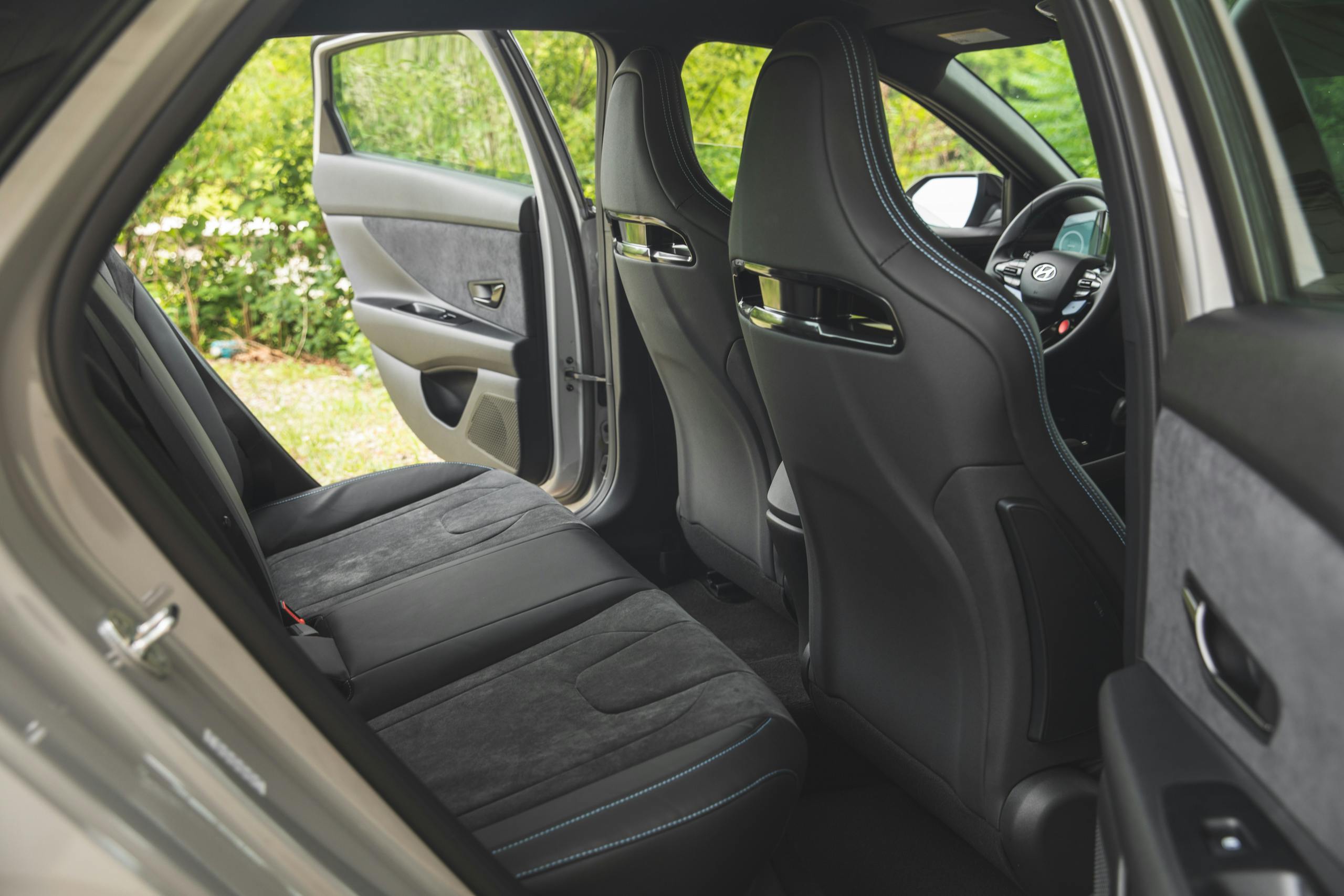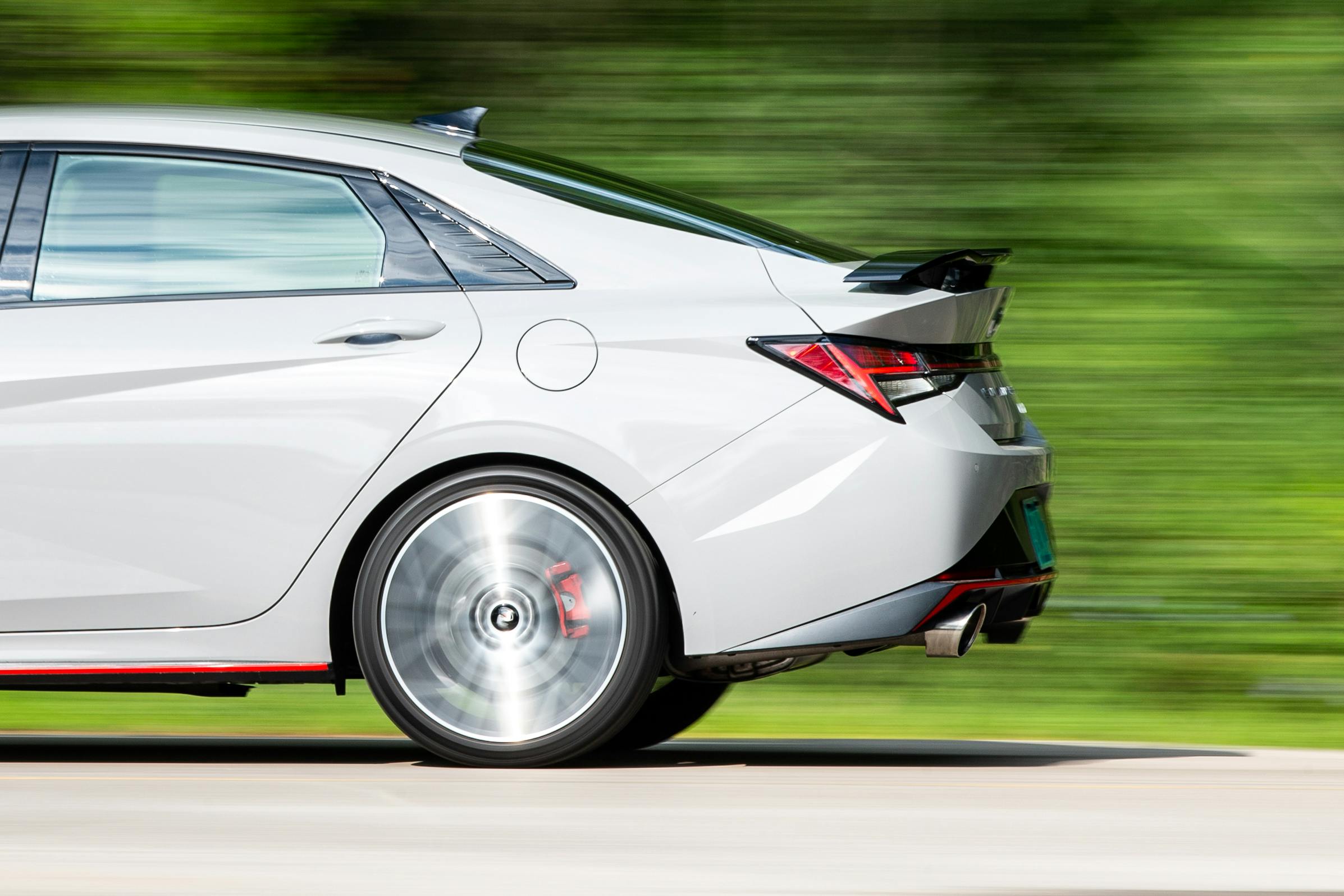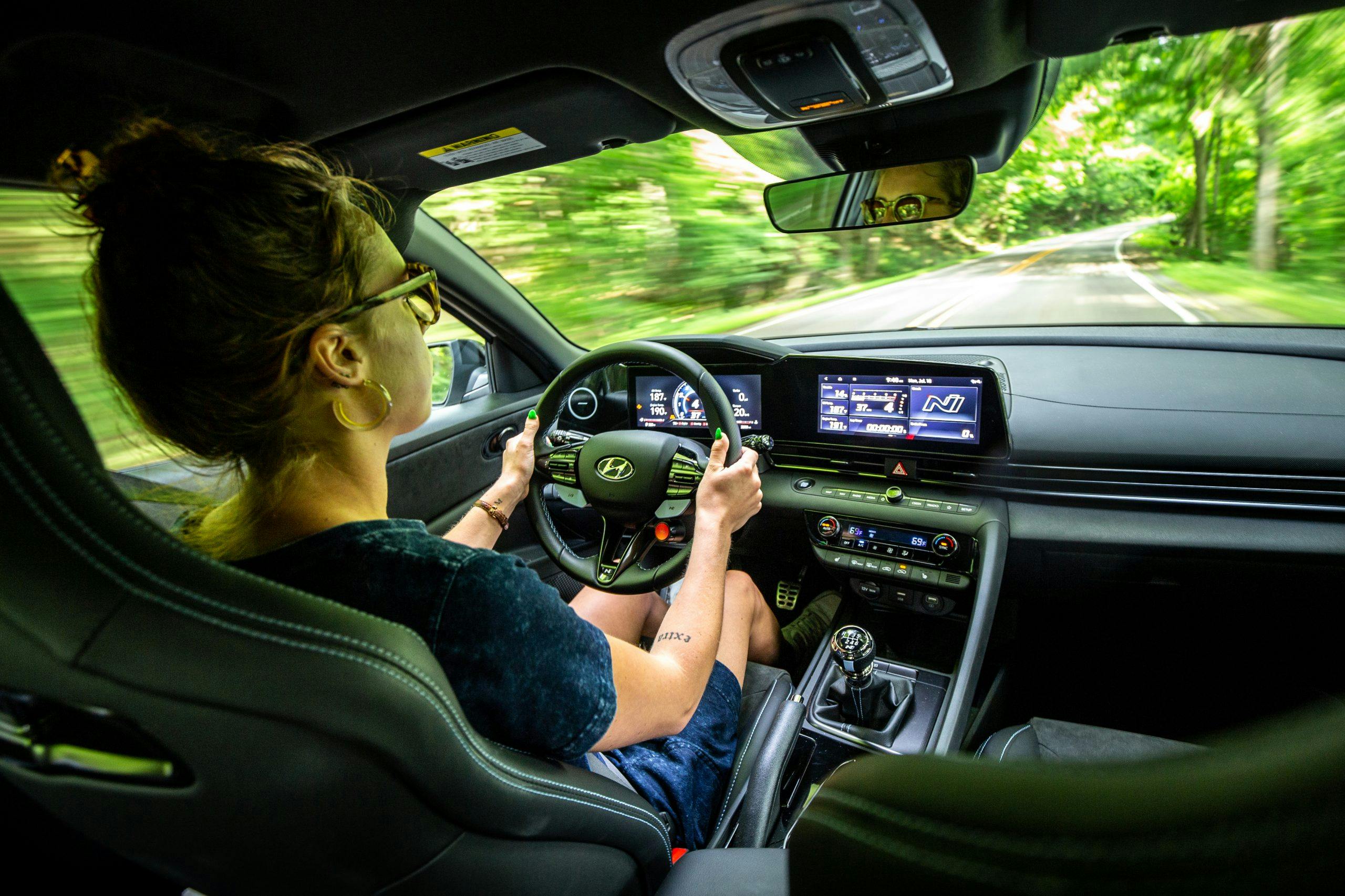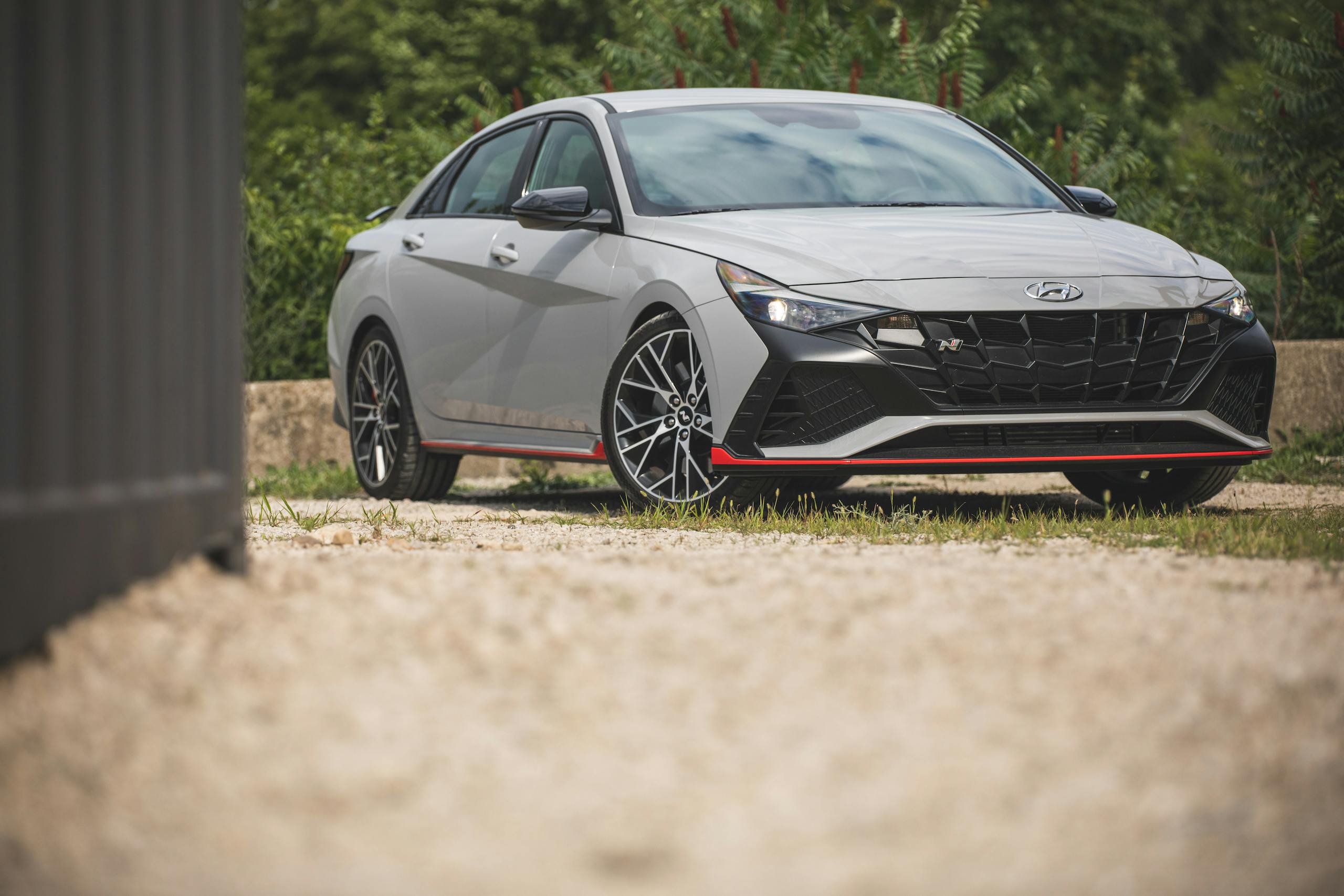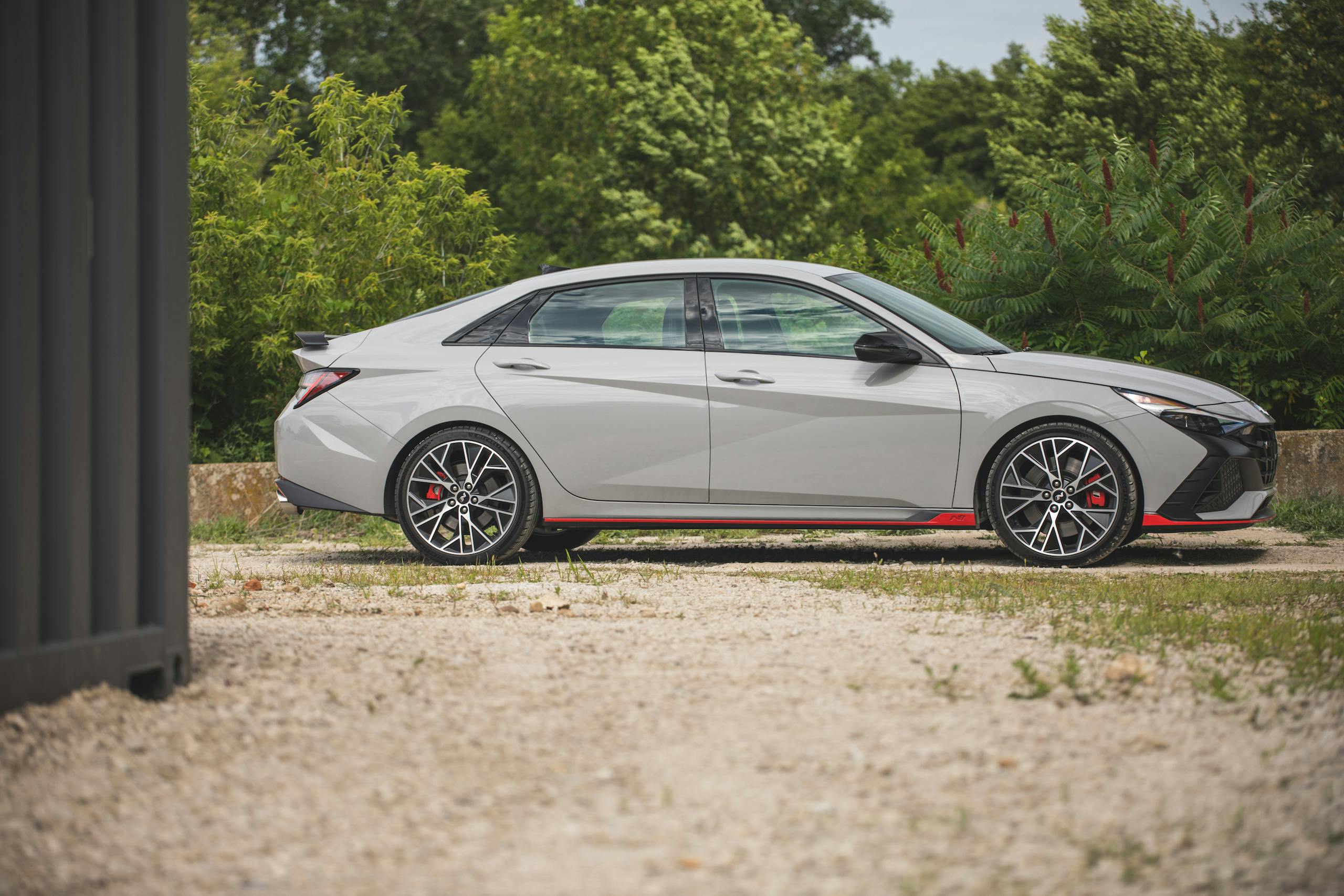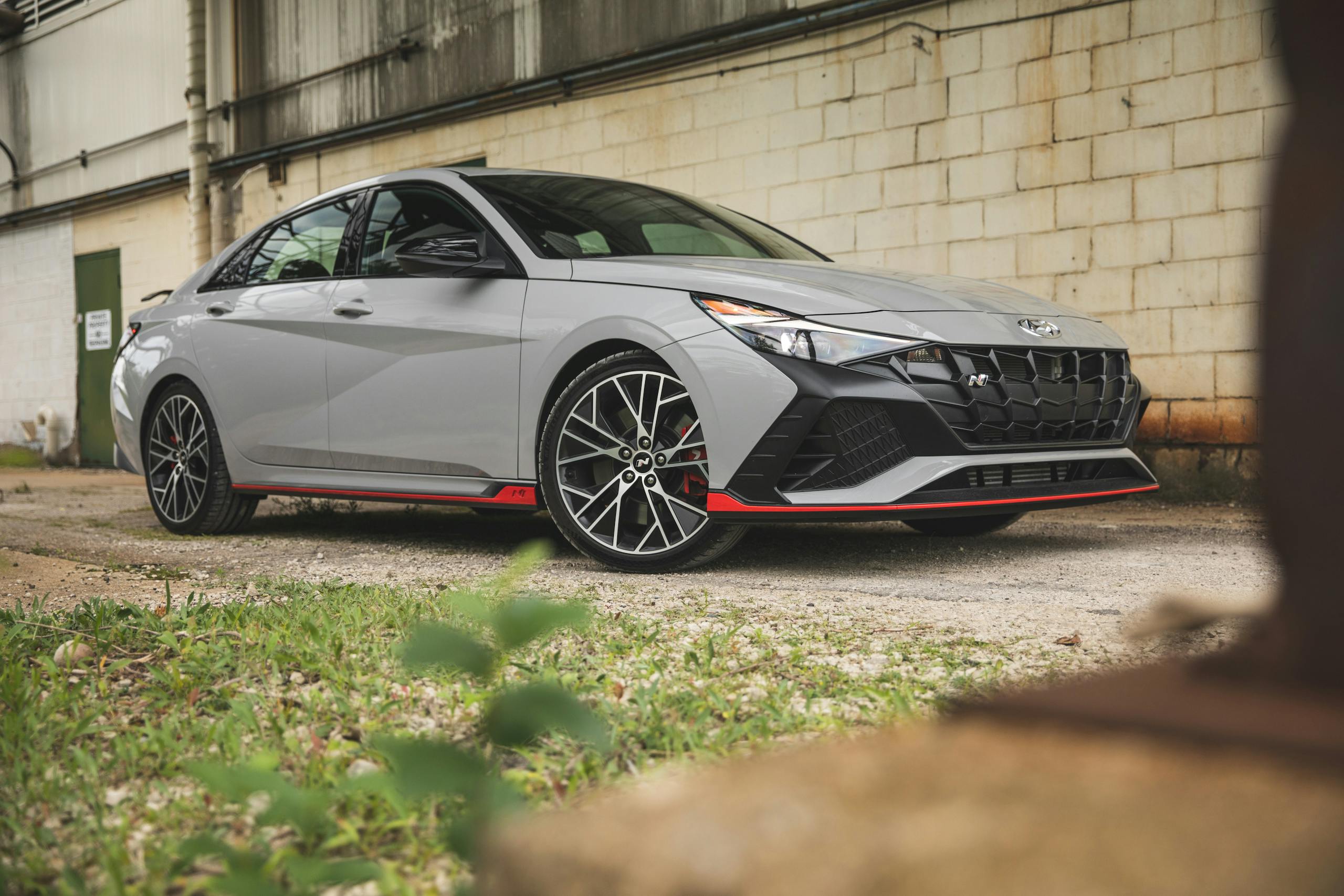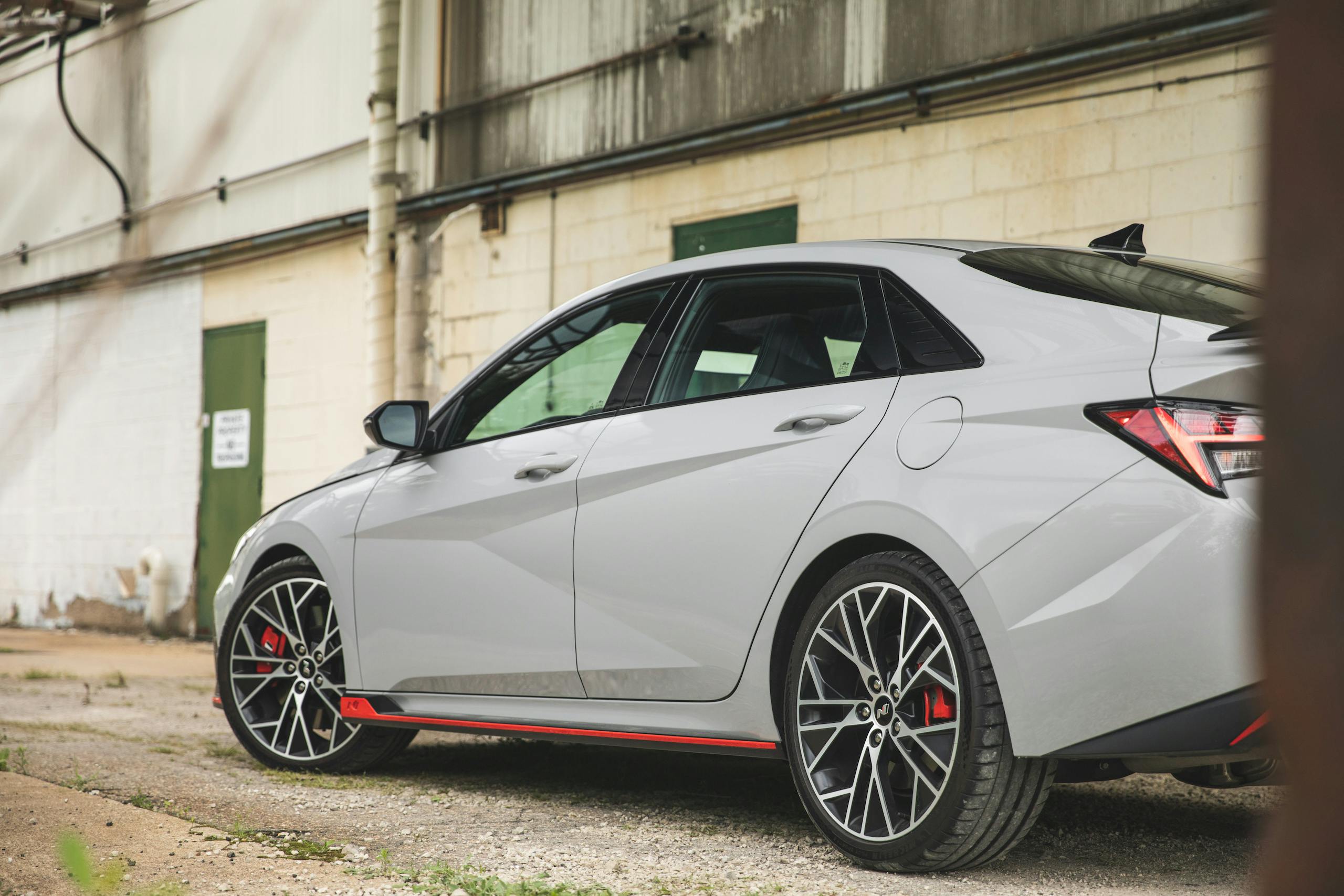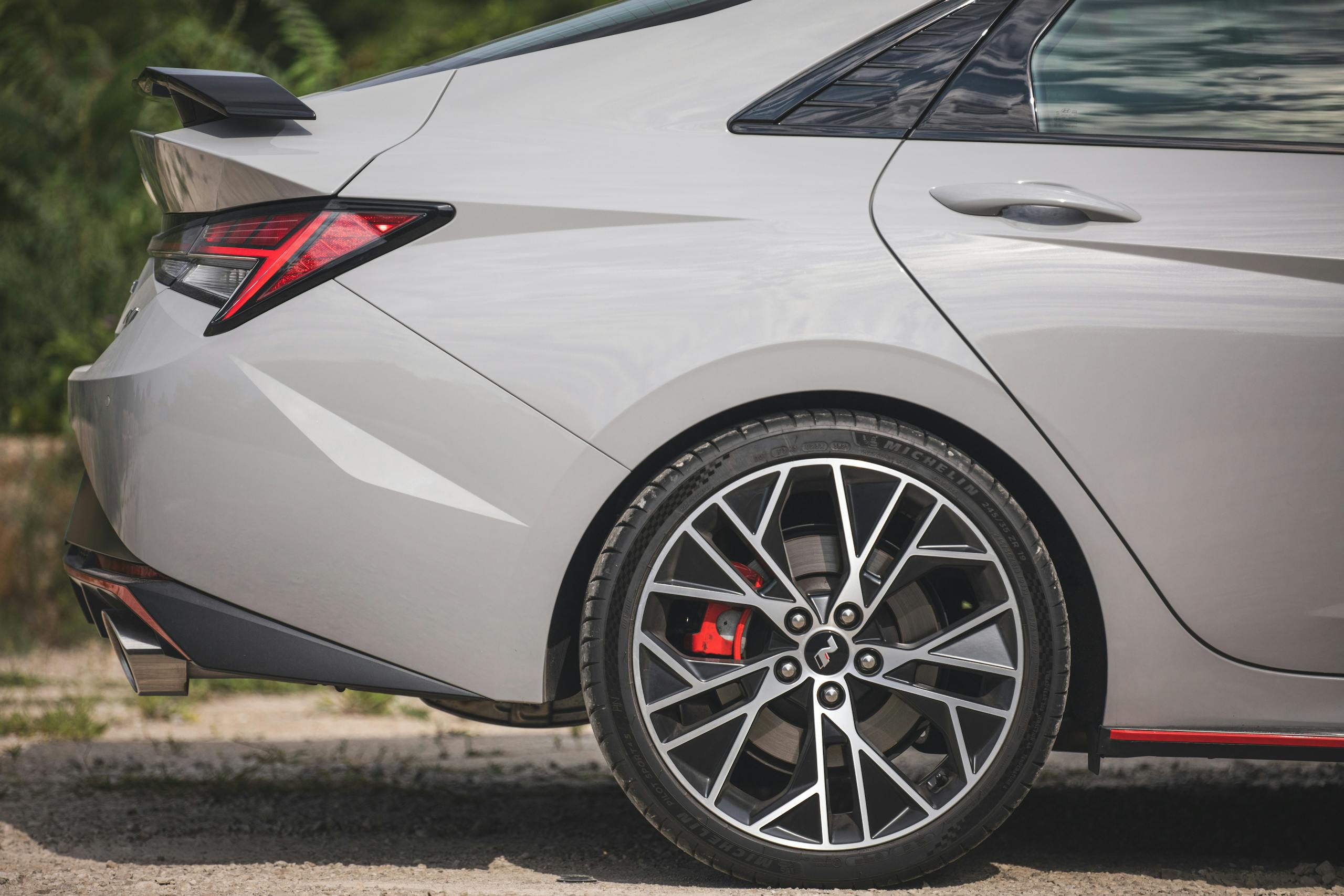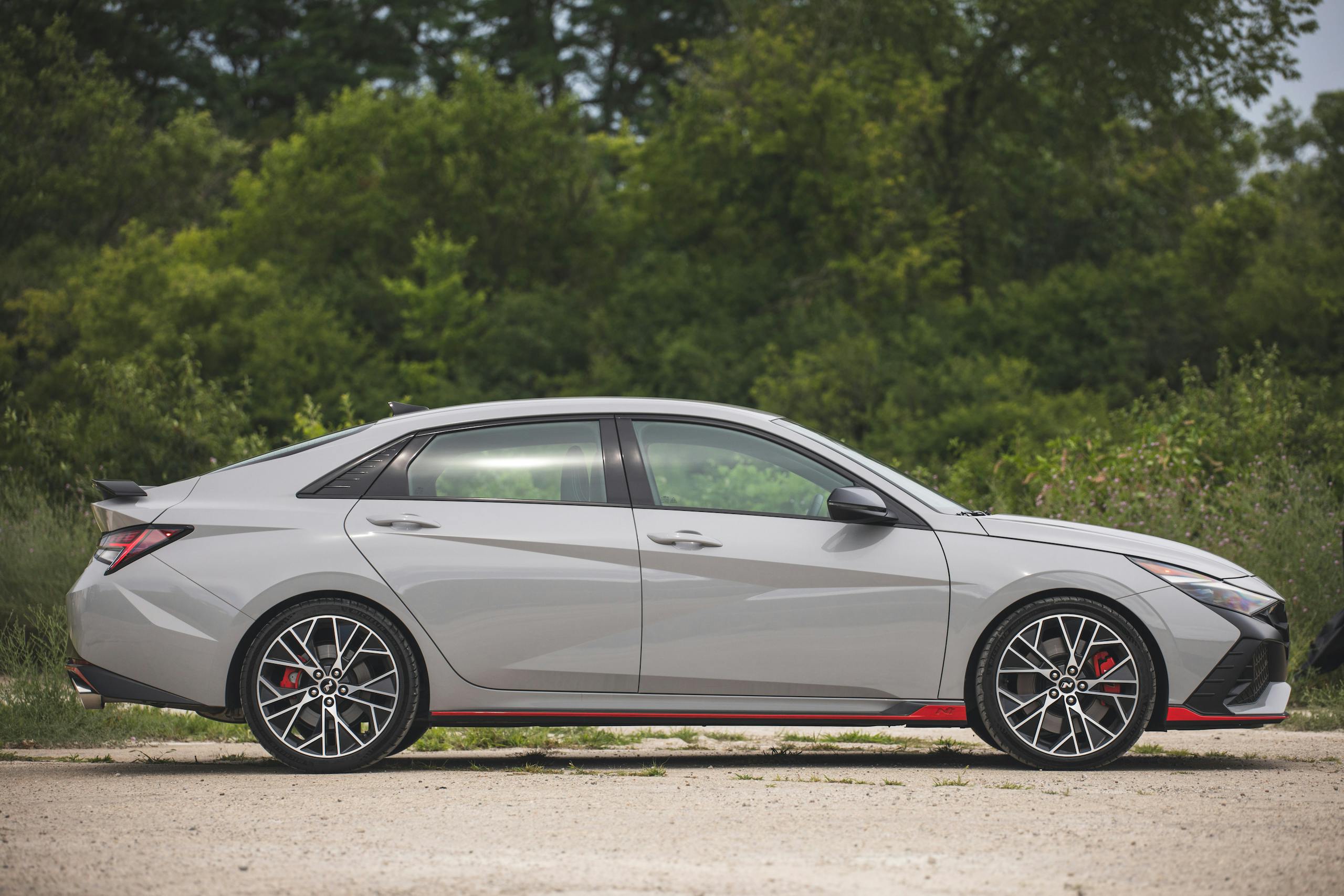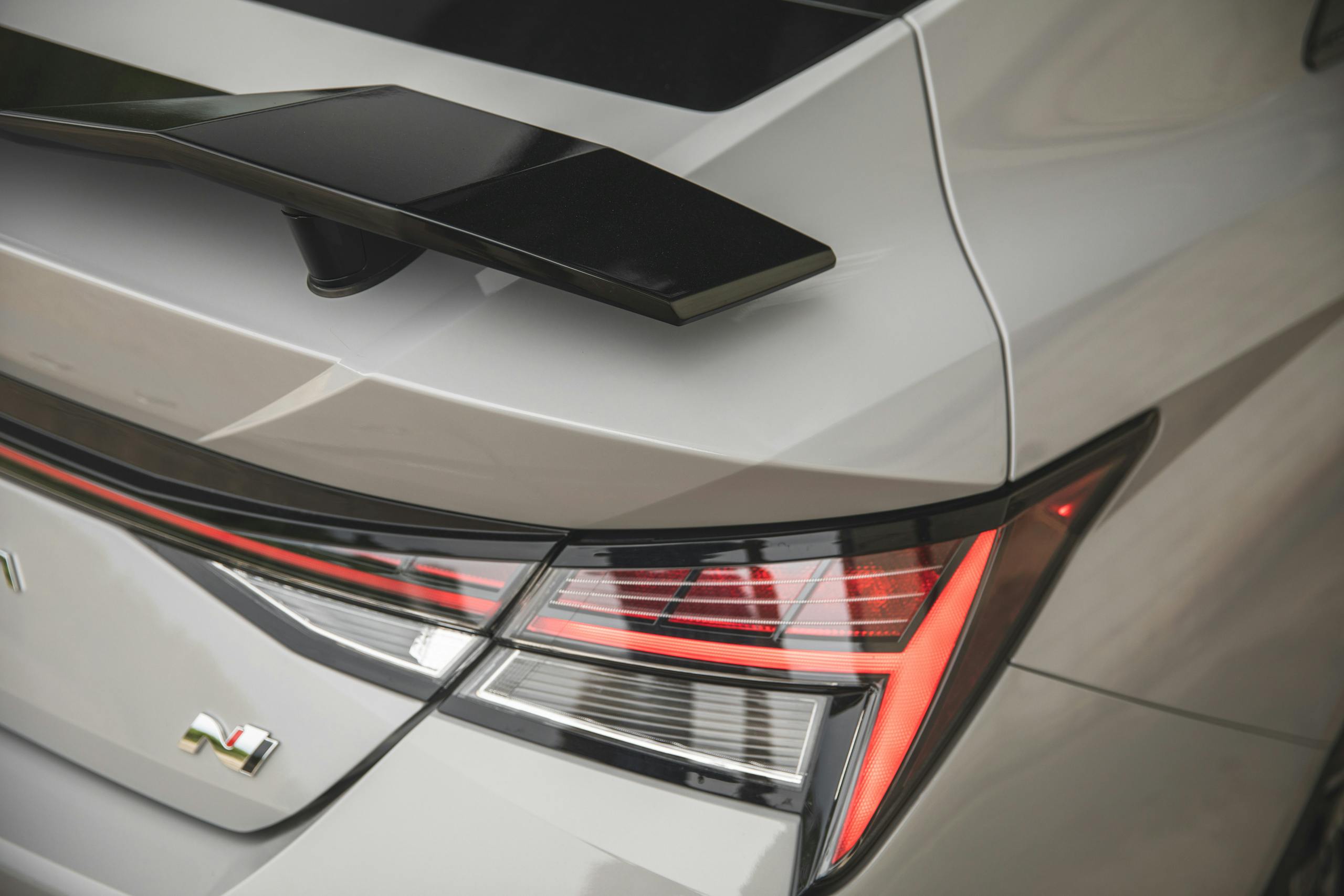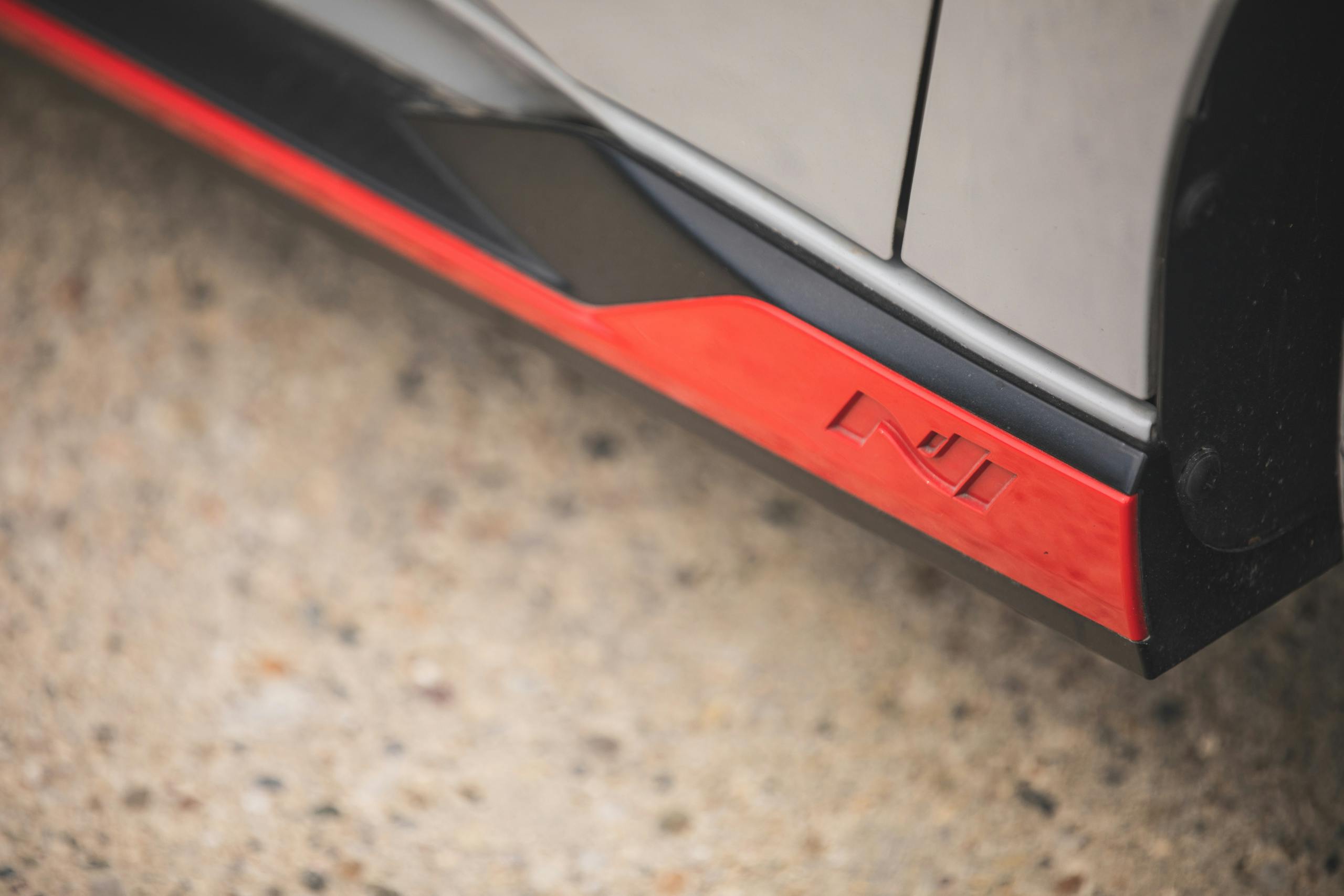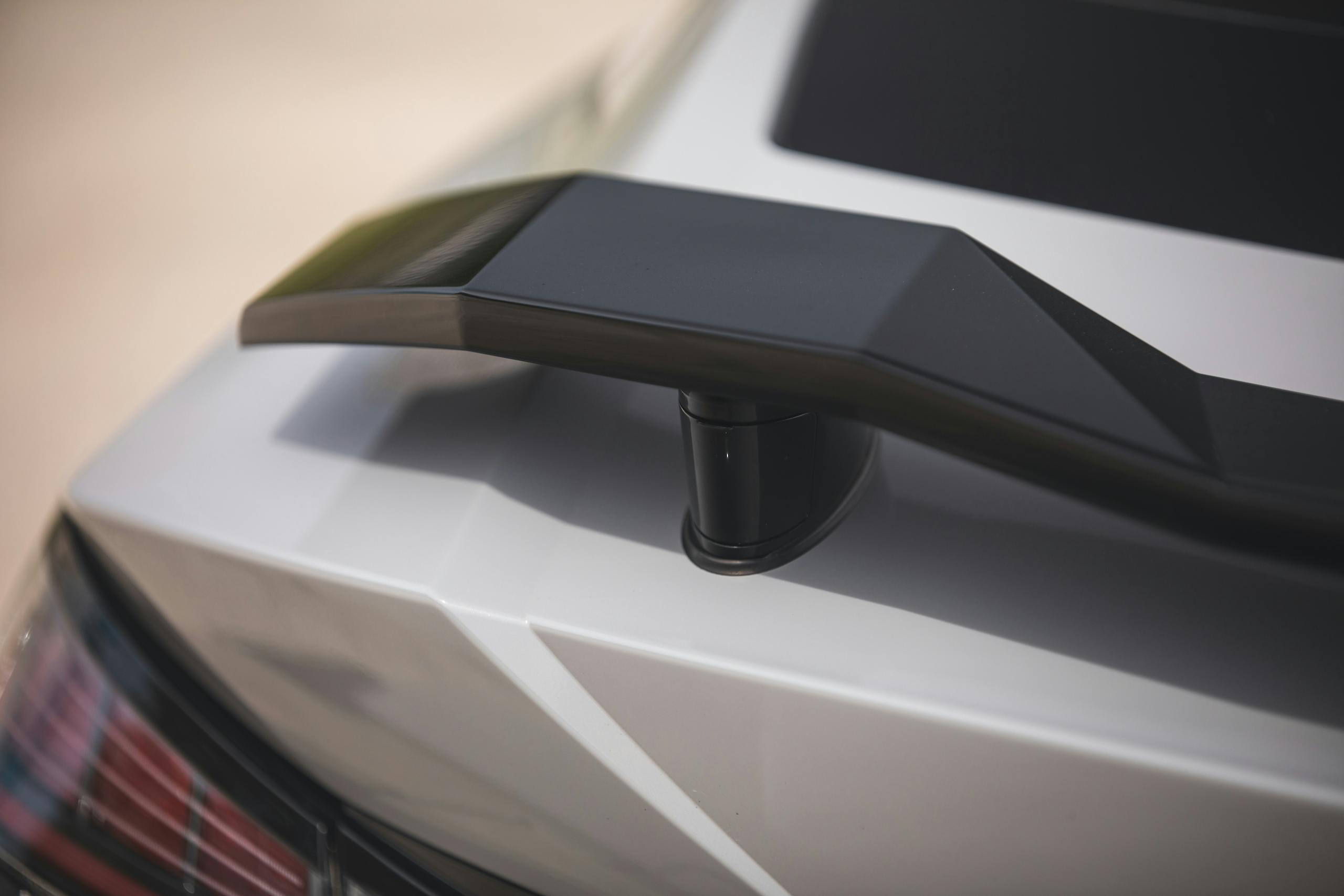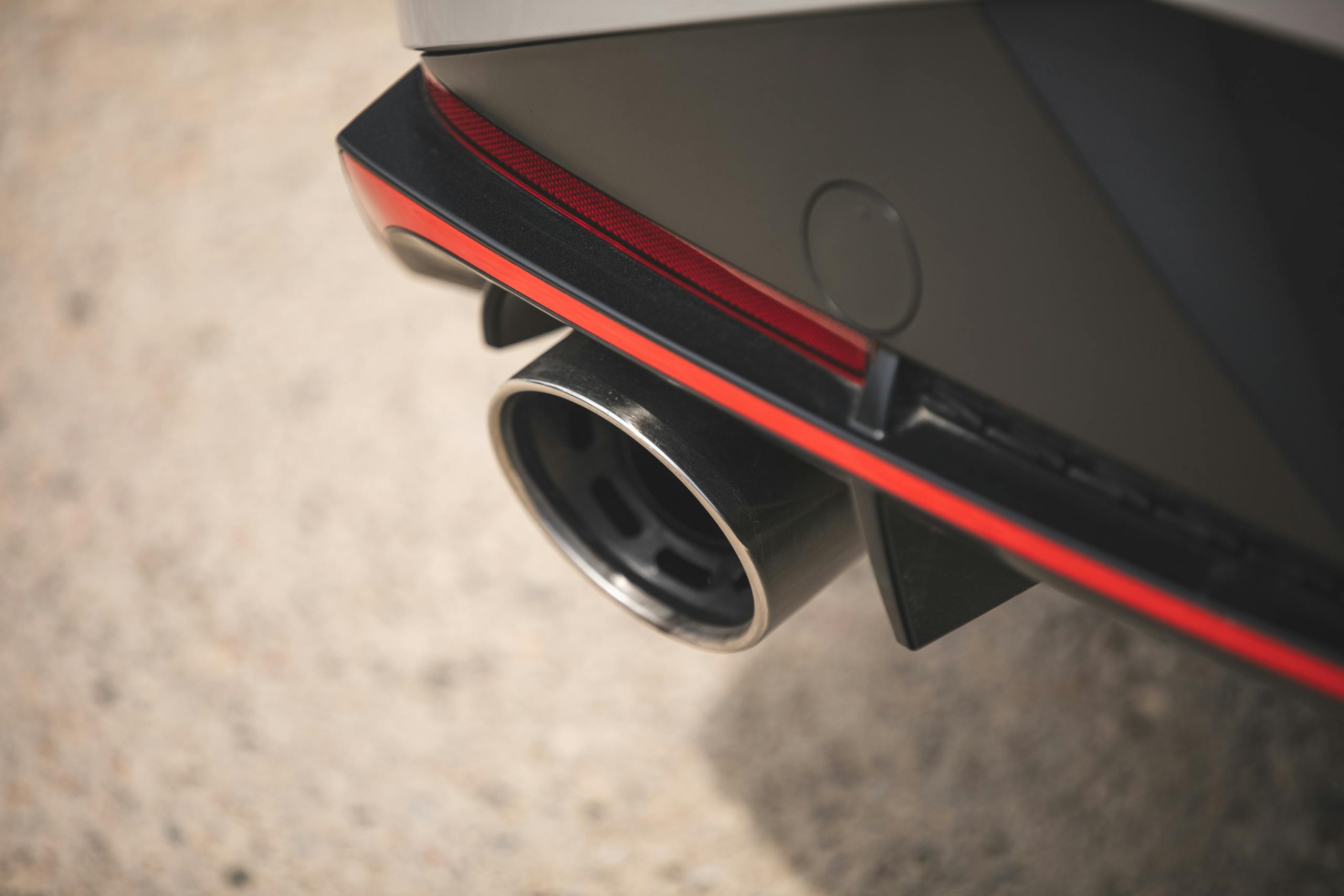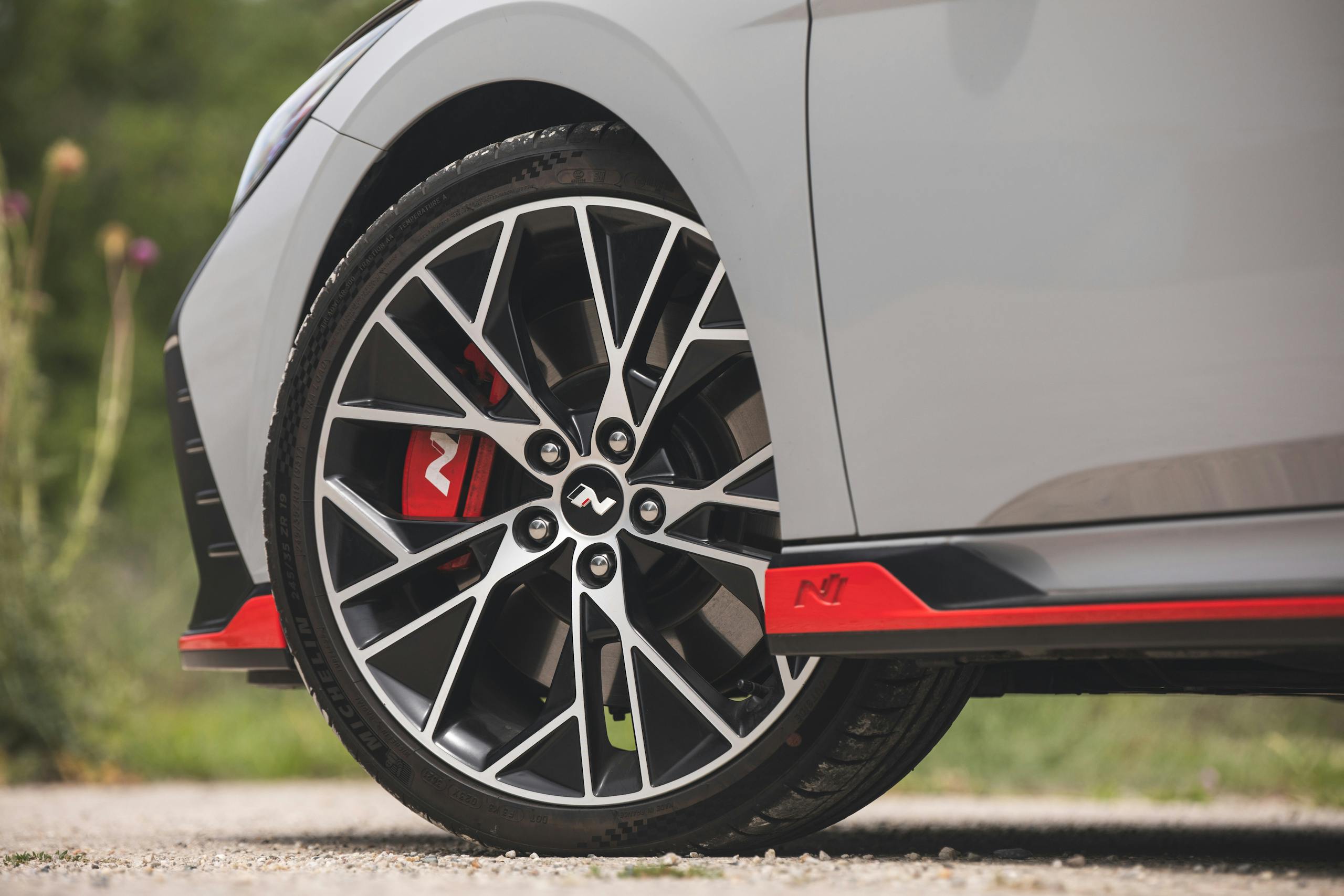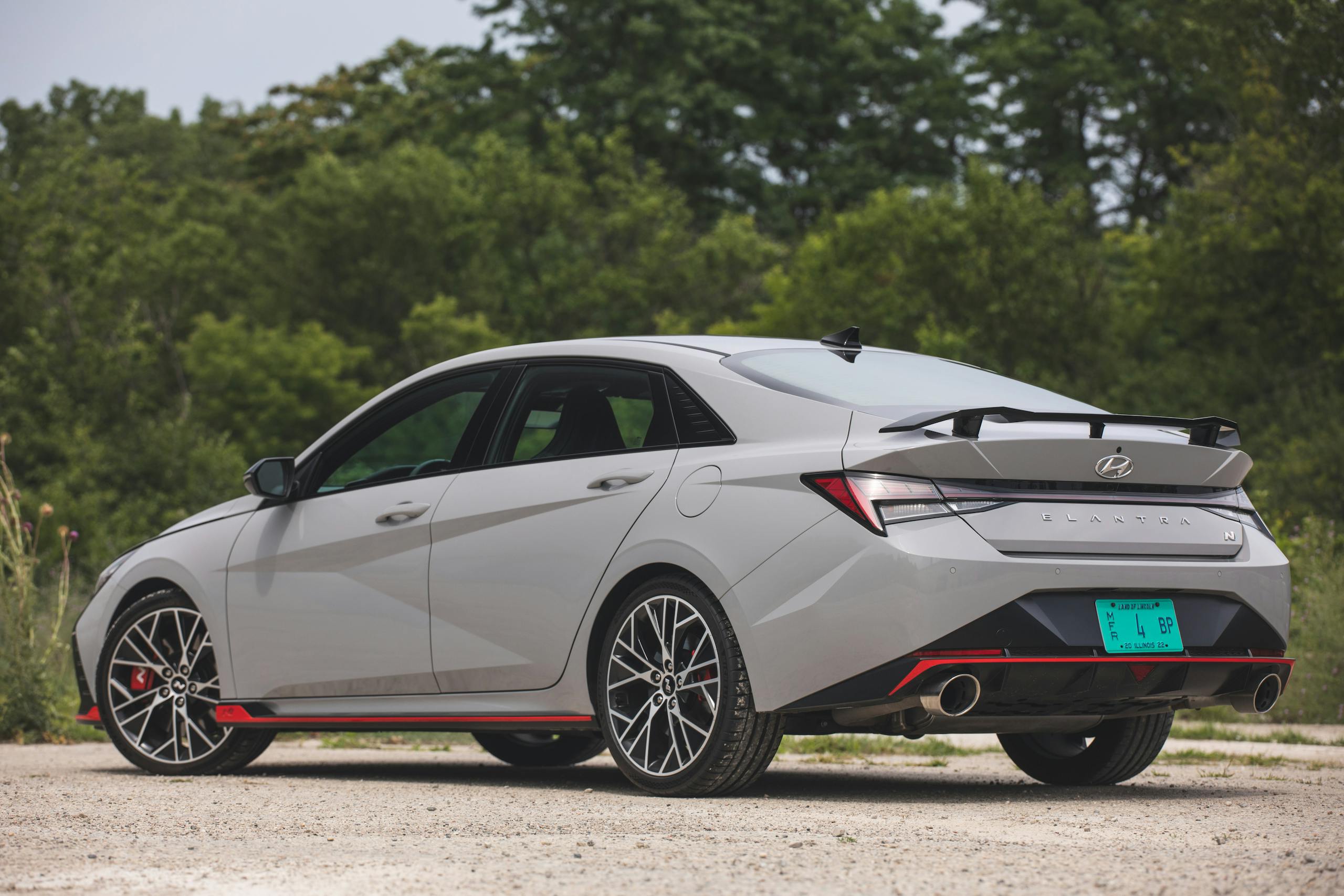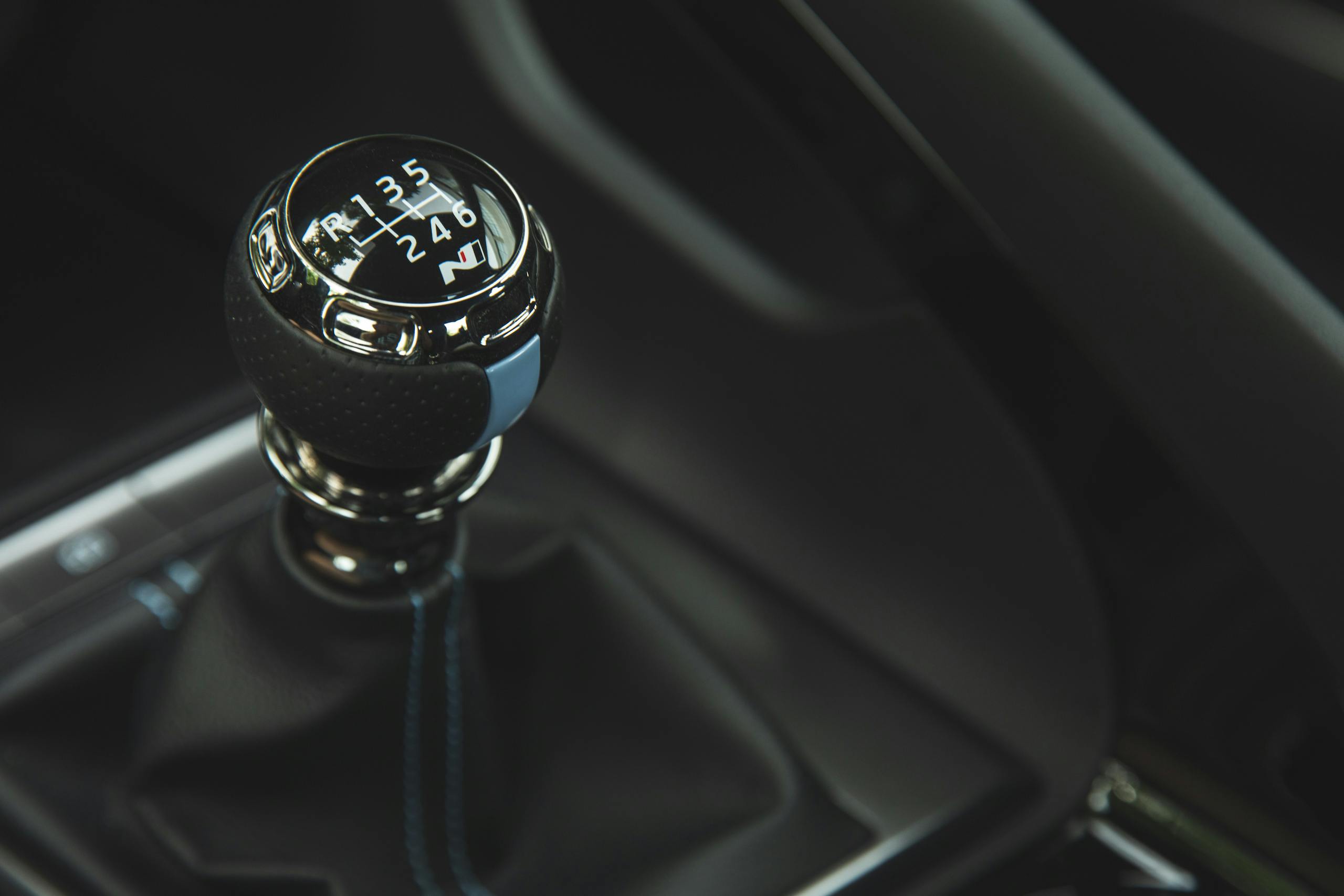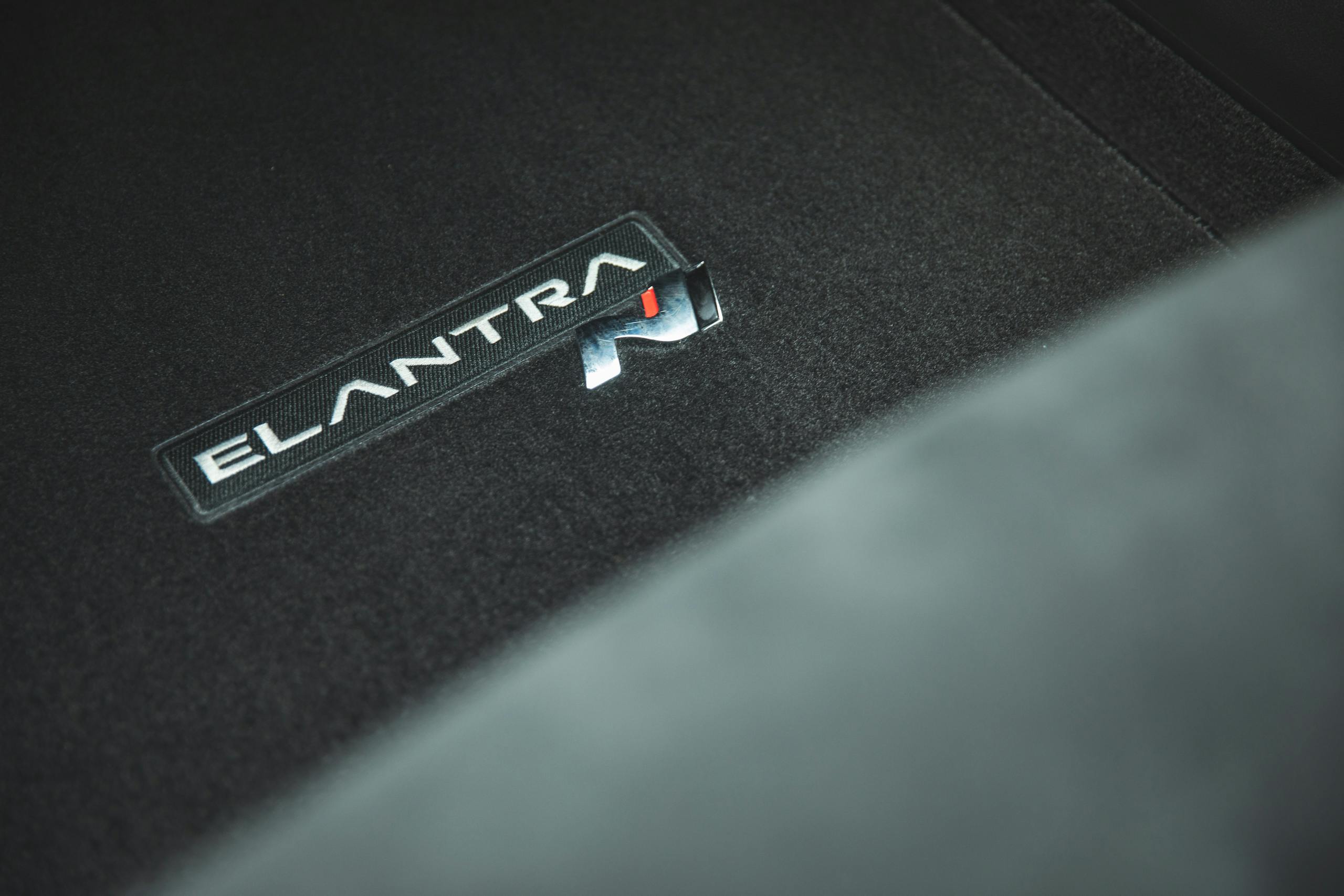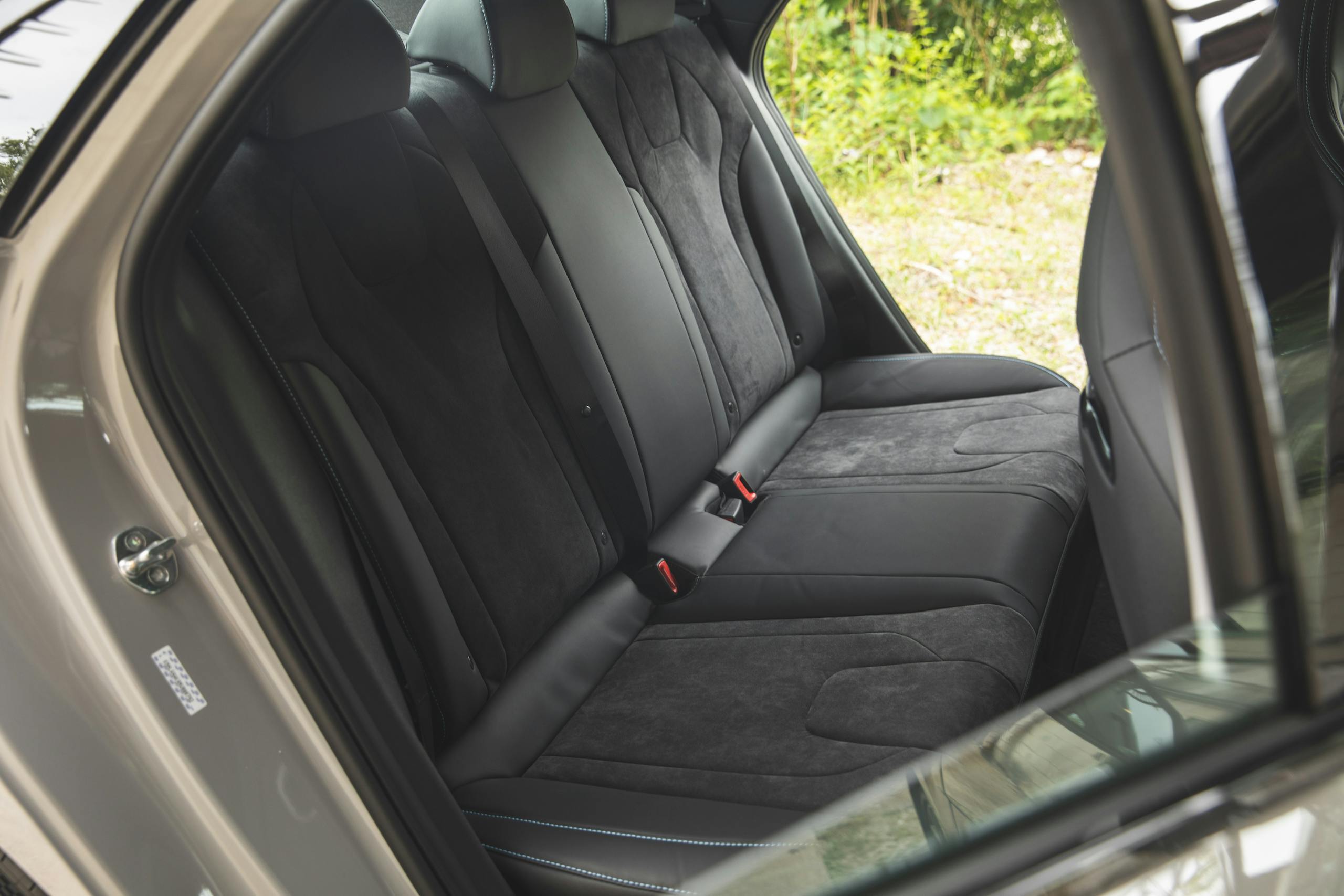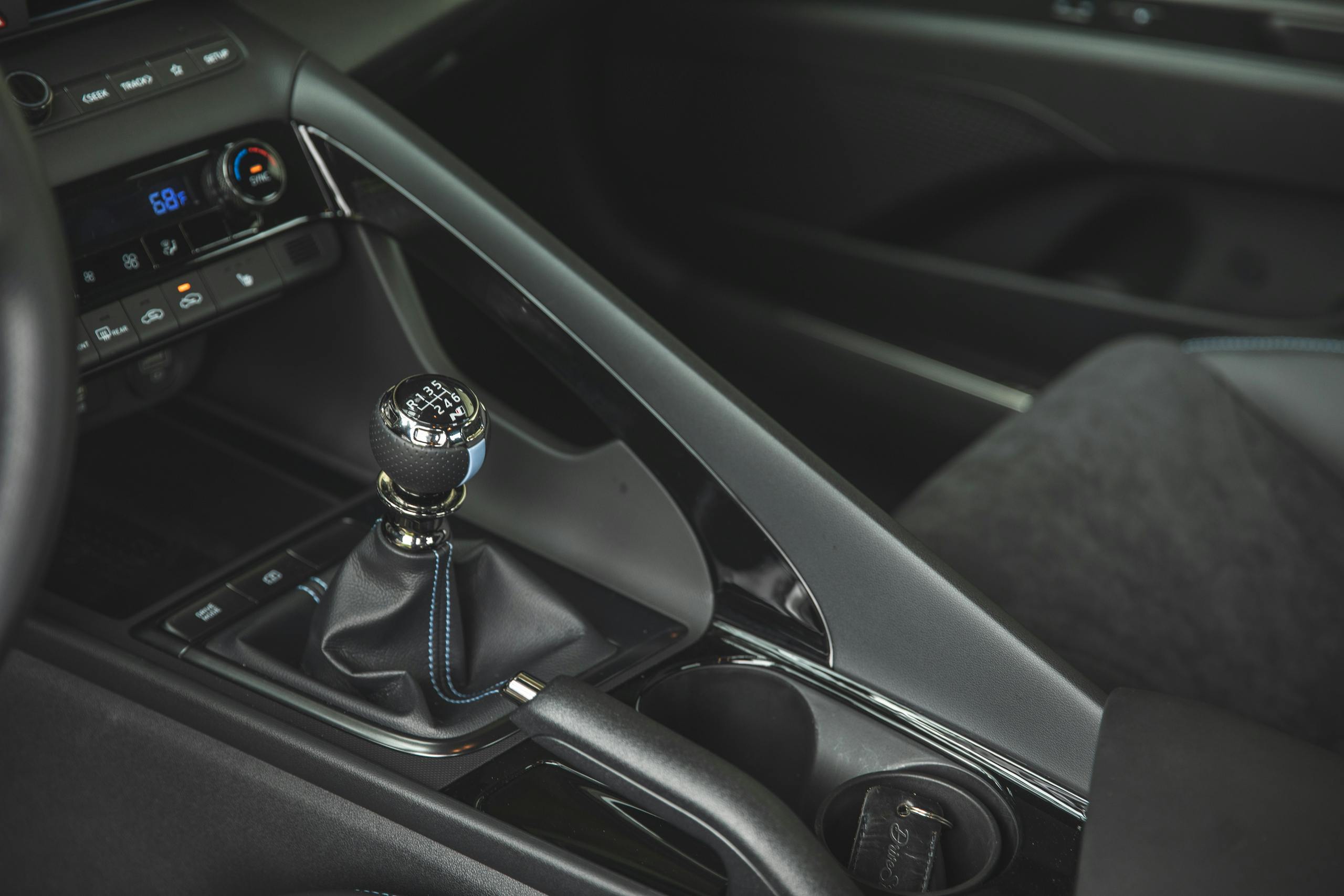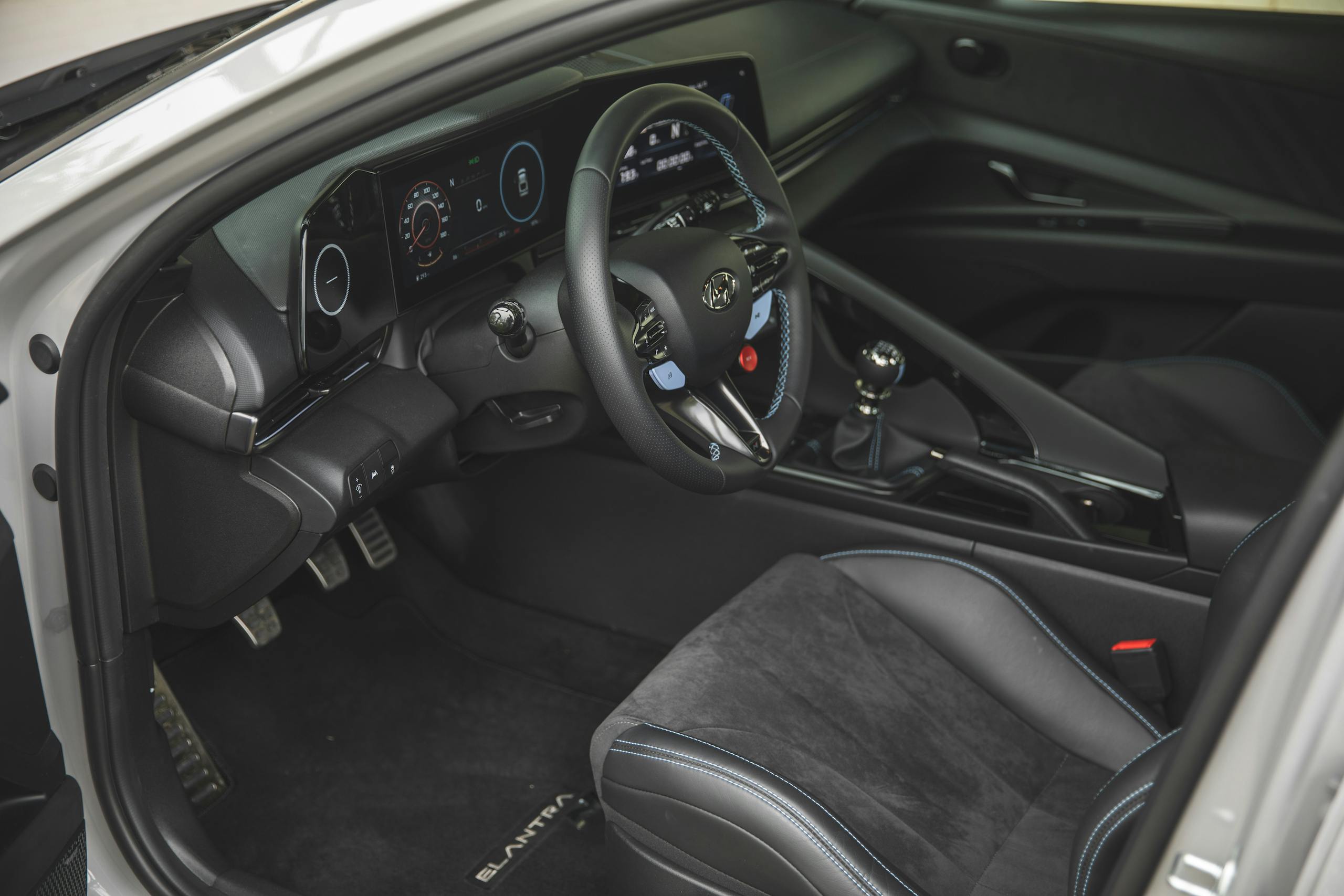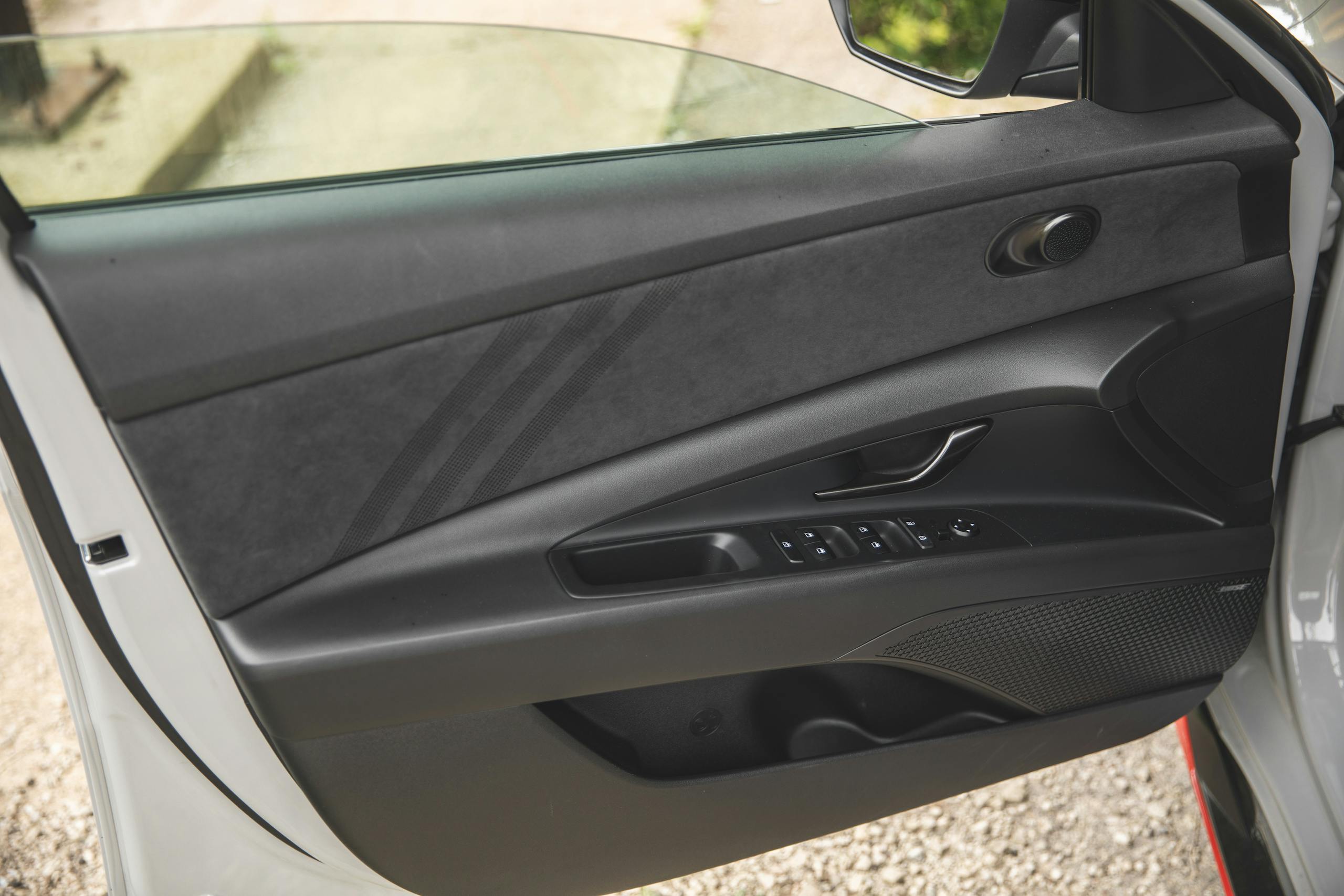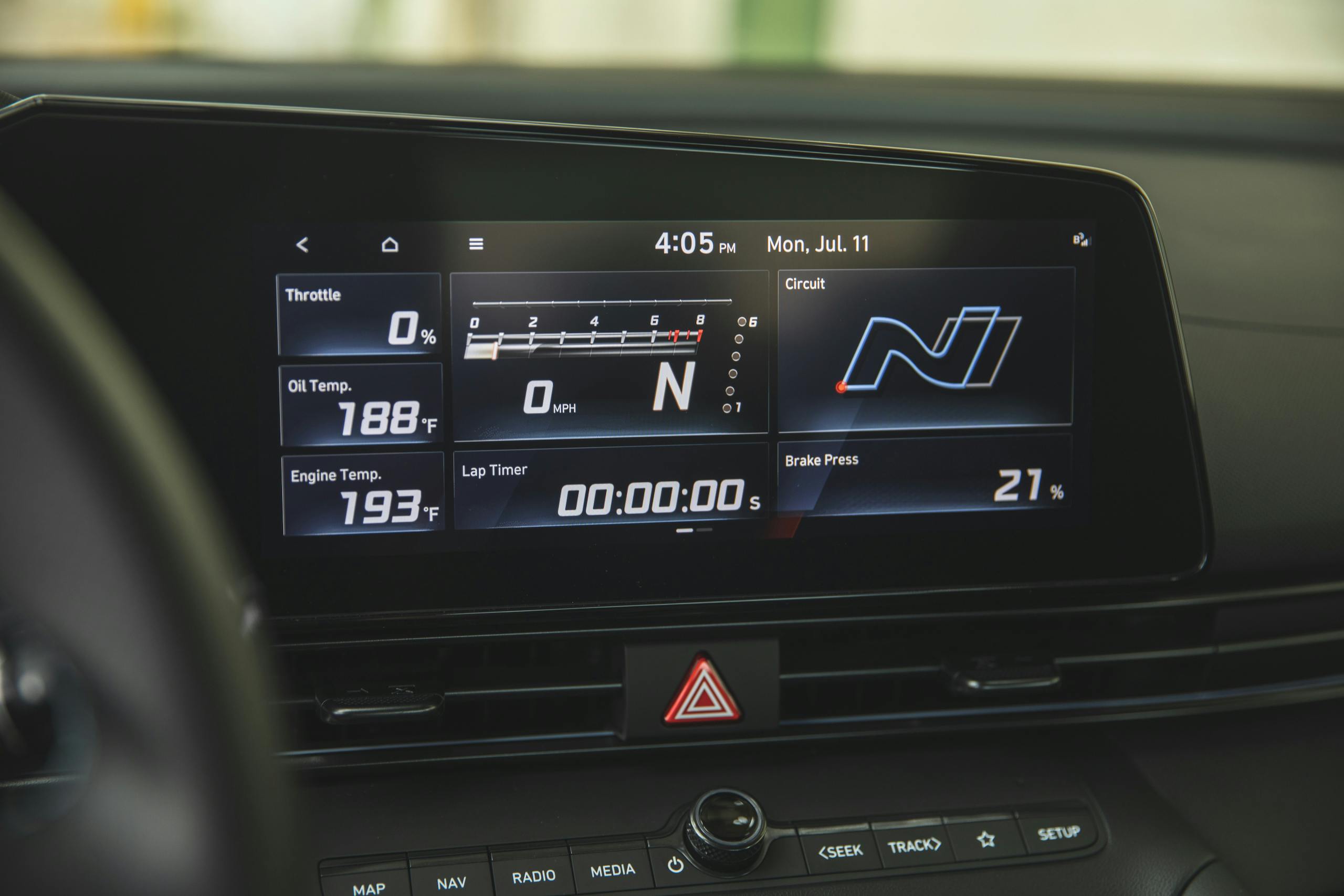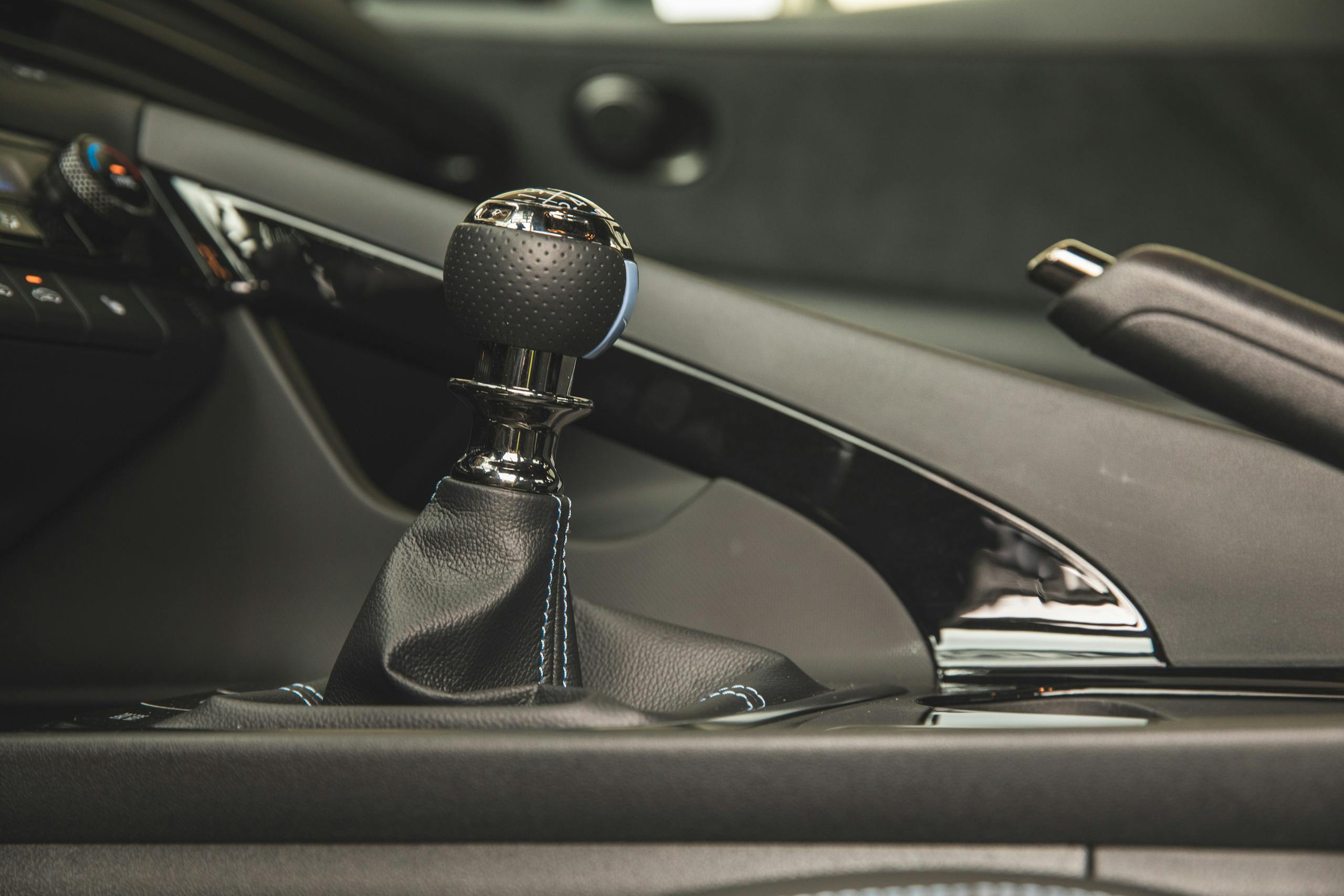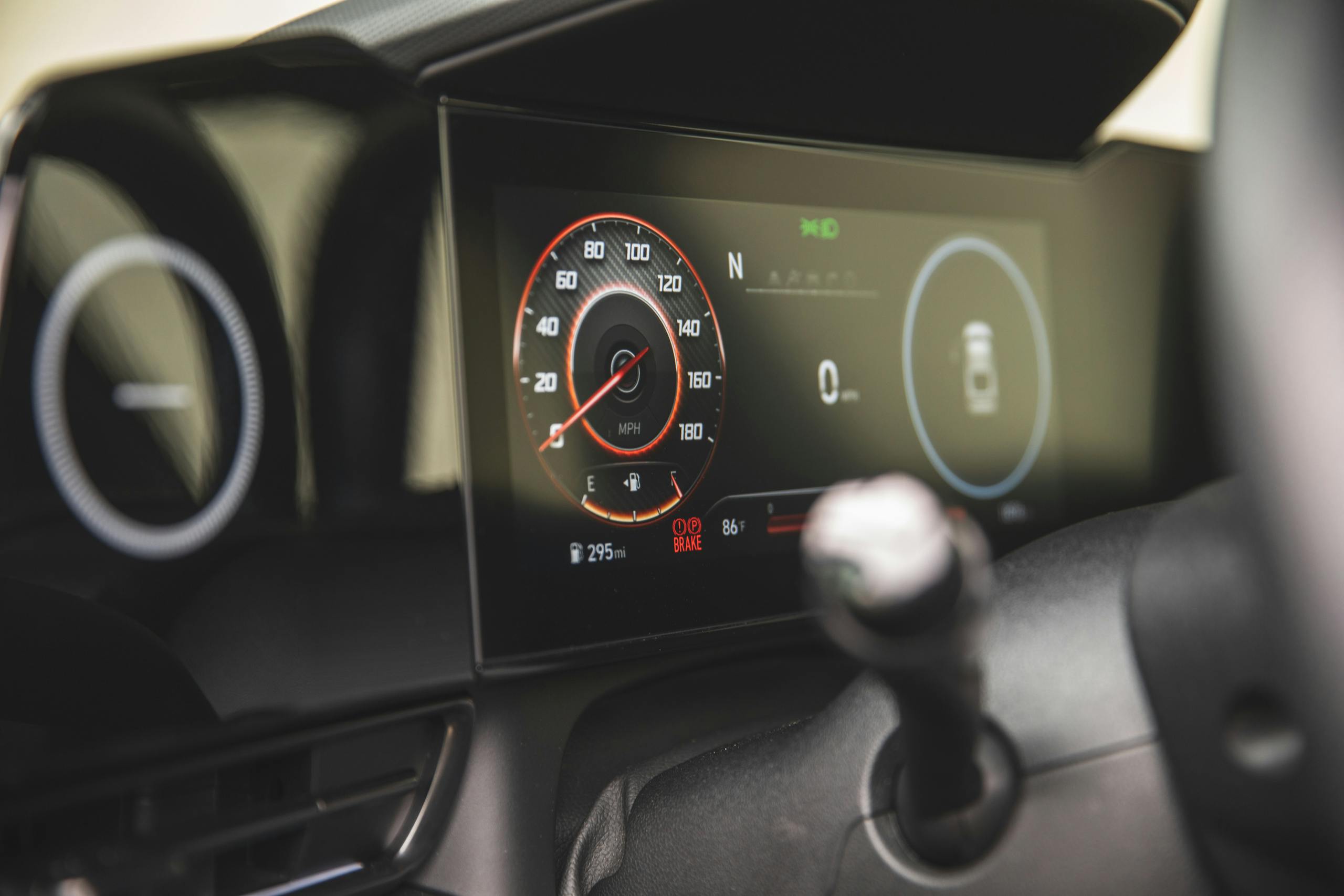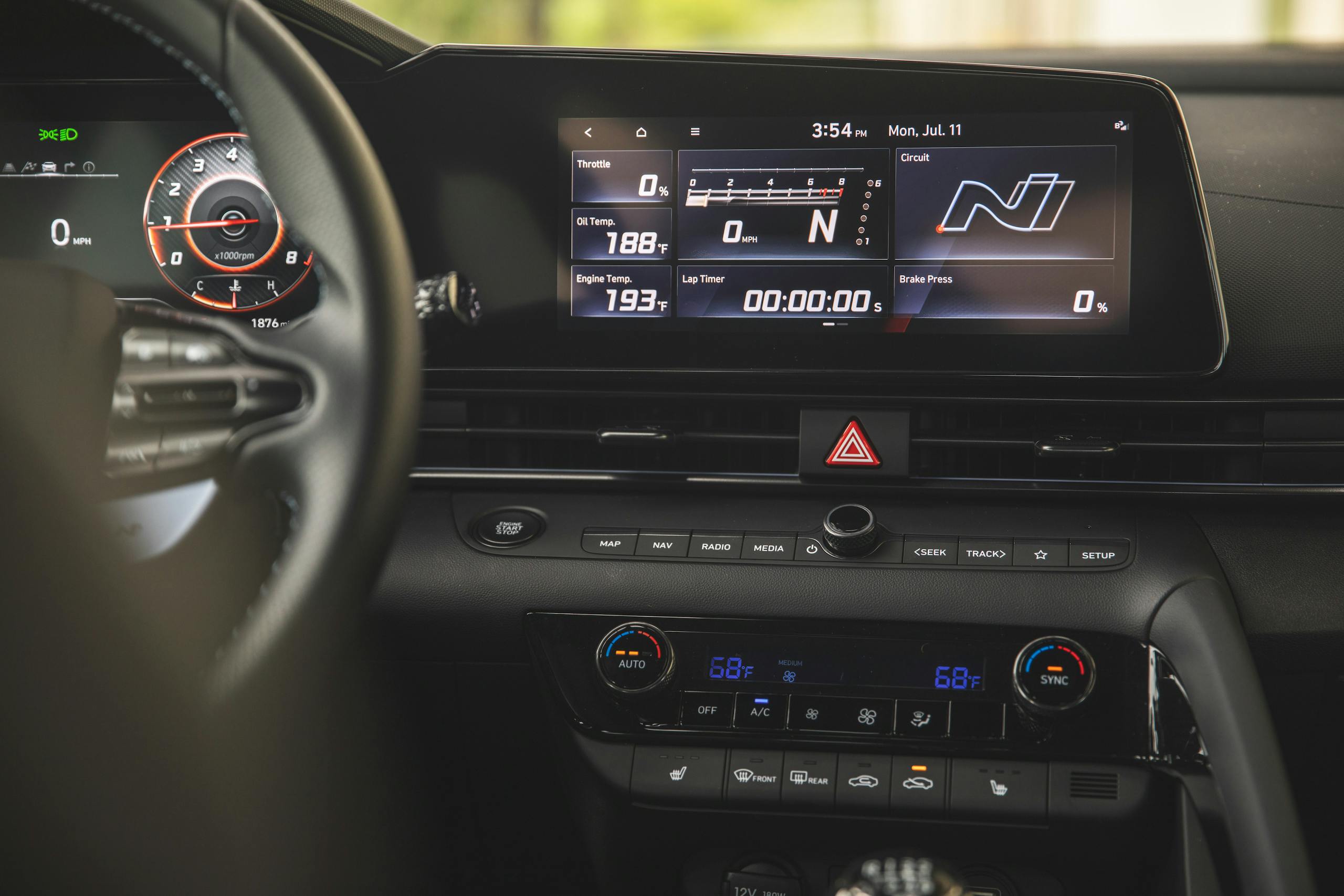Media | Articles
Review: Hyundai’s Elantra N is feisty, fresh
The Hyundai Elantra has played several roles over the course of its 30-year life. Budget-buy blob. Adequate commuter compact unremarkable for anything but its warranty. And as of 2021, a confident, Korean-punk alternative to the stalwart Honda Civic. One thing it has definitely not been? Giggle-inducing hot rod.
For the 2022 model year, the Elantra N changes that. “N” is the key letter here. It denotes the work of Hyundai’s in-house performance arm—think AMG to Mercedes. In April of 2015, Hyundai recruited Albert Biermann, who had spent 31 years at BMW and, as head of its M division, oversaw the first V-8 M5 (E39), the last M3 with a naturally aspirated inline-six, and the raucous 1 Series M. The Korean company wisely gave him a long leash, and Biermann set about transforming the Veloster into a track rat.
N and Biermann succeeded, but the deliciously fun car sold in disappointing volume. (The Veloster’s odd three-door layout and cramped second-row seating didn’t help.) The Elantra N proves that, even as Biermann has stepped back into an advisory role, his vision has stuck. Among pedigreed rivals eager to prove their new-found maturity, the Elantra N dares to swagger, sauntering into the front-drive, turbocharged party with a cheekful of Double Bubble.
Despite having four real doors, the sedan reads as only slightly less weird than the Veloster N it replaces. Elantra designs have historically ranged from ho-hum to pretty to downright derivative, but Hyundai went all-out with the 2021 car’s “parametric dynamics.” Forked creases in the side doors, bumpers that look like they’ve been contoured with a putty knife. Given such a manhwa baseline, the exterior cosmetic changes from the base car to the N model are relatively understated. The spoiler, rear diffuser, 19- rather than 18-inch wheels, flared exhaust tips, even the healthy dose of blacked-out grille and red trim add up to something less shouty than the outgoing Civic Type R.
The interior shows similar self-control. No fake carbon-fiber or garish red stitching: Cool blue is N’s accent color of choice. The N still succeeds in distinguishing itself from the $28K N-Line—a 200-horse, N “lite” model with none of the N’s comprehensive chassis upgrades. The steering wheel sprouts three colorful, N-specific buttons—two blue pads and one red circle; on the manual-equipped car, it toggles rev-matching; on the DCT model it triggers a temporary overboost, dubbed N Grin Shift. The wheel backed by a 10.25-inch digital gauge cluster (the N-Line spins actual needles) tucked behind a glass panel that extends rightward to include the 10.25-inch infotainment display. The seats are svelte, suede-trimmed buckets fitted with light-up N badges and scored diagonally with perforations that reveal a layer of blue. Climate- and radio controls are clearly base-Elantra fare, but they’re useful and logical.
Marketplace
Buy and sell classics with confidence

Like the Jetta GLI, the sportiest Elantra is available in a single, loaded trim. Most of the goodies from the Elantra’s poshest model, the $27,395 Limited, are present on the N model: Bose audio, wireless charging pad, adaptive cruise control, remote start. Most notably, it eschews the Limited’s electronic parking brake in favor of a mechanical lever. Why can’t other companies offer the same thoughtful courtesy on performance models? If you can resist an extra $400 for Performance Blue or Ceramic White paint, price with destination is $33,245 for a manual N car. (Since the Kona N subcompact crossover is DCT-only, the Elantra is now N’s sole stick-shift model.) A wet, dual-clutch eight-speed auto adds $1500.
Since the driveline was a known quantity, N’s changes centered on stiffening the Elantra’s chassis and upgrading the suspension to accommodate the extra power and torque. Most conspicuous is the red strut brace directly behind the folding rear seats, visible from the trunk. The fixed bar cramps practicality, but the component wins a 29 percent increase in structural rigidity over the base Elantra. The N division evidently thought that a fair trade, but it will be a dealbreaker for some buyers. Other changes include reinforcements for the front subframe, the center tunnel, and the rear tunnel brace. On each side, the driveshaft is integrated with the wheel hub and bearing to support the front assembly under lateral g-loads and shave a few pounds. The adaptive dampers and electronic limited-slip differential carry over from the Veloster N, though they are tuned differently here. The suspension features two different bushing compounds to balance everyday compliance with stiffness.

And the Elantra N really is a delightful day-in, day-out companion. Ask little of it, and the sedan fades demurely into the background. The cabin controls strike an intuitive balance between digital and analog (you’ll need to bring a cord to use CarPlay, though). The clutch is light enough for hour-long sessions in stop-and-go traffic, and take-up is clear enough to make acclimation easy. Shifter throws are pleasantly short. The adaptive, electronically controlled suspension provides a competent, supple ride even over brutal highway pavement seams; we credit most of the harshness around town to the lack of sidewall. Sport mode spices things up from the base Normal setting, quickening throttle response and cracking the baffles in the active exhaust. Use Eco or Comfort for highway cruising if you’re sensitive to low-level droning, and relax knowing you’re getting north of 30 miles to the gallon.
The sleeper act drops once you thumb one of the blue N buttons on the steering wheel. The Elantra tenses. Throttle and brake response key up, dampers and steering stiffen. Squeeze the pedal, and torque steer causes the wheel to tug at your hands, even with the wheels pointed dead ahead. Drop it into third and start tipping into forest-road curves, and the car makes you feel like hot stuff, slinging through bends indiscernible roll, the brakes powerful but never grabby, the exhaust gunshotting through the trees. You’ll never care less what the car looks like.
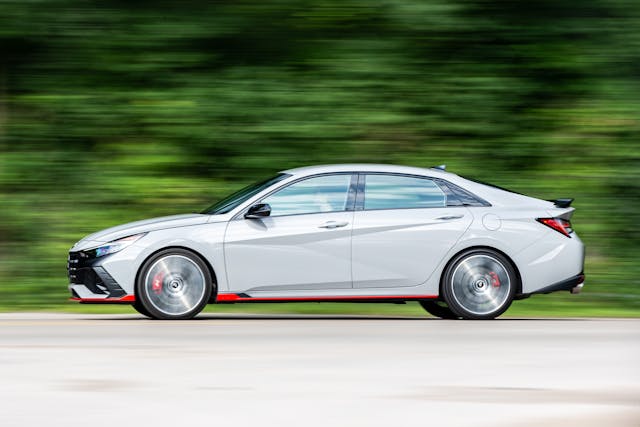
In a break from all Elantra tradition, the N model relies on its fresh, feisty personality more than its value proposition. At first glance, it doesn’t stack up neatly against the competition. The Elantra N splits the difference between the 200-hp, $28K Civic Si and the 315-hp Type R hatchback, which if history is any indication will close on $40K in competition with the VW Golf R. Free of a trunk brace bar, VW’s Jetta GLI makes its case based on superior utility and more subtle styling. At roughly $33K, the German matches the Elantra’s price—and much of its performance kit, like the LSD—but falls short on horsepower (at 228) and interior refinement. The Mazda3 entirely, since its play is more premium than performance, and the only stick-shift version pairs with a workaday 186-horse engine.
Numbers aside, the Elantra N is worth taking seriously. The hot-rod economy sedan party is duller without it.
2022 Hyundai Elantra N
Price: $33,245 / $33,245 (base / as-tested)
Highs: Spacious cabin, tastefully appointed for its class. A chassis ready for highway and backroads alike.
Lows: Angry-catfish looks, explanation of heritage required.
Takeaway: Magnetic meld of immature and sensible.
Check out the Hagerty Media homepage so you don’t miss a single story, or better yet, bookmark us.
